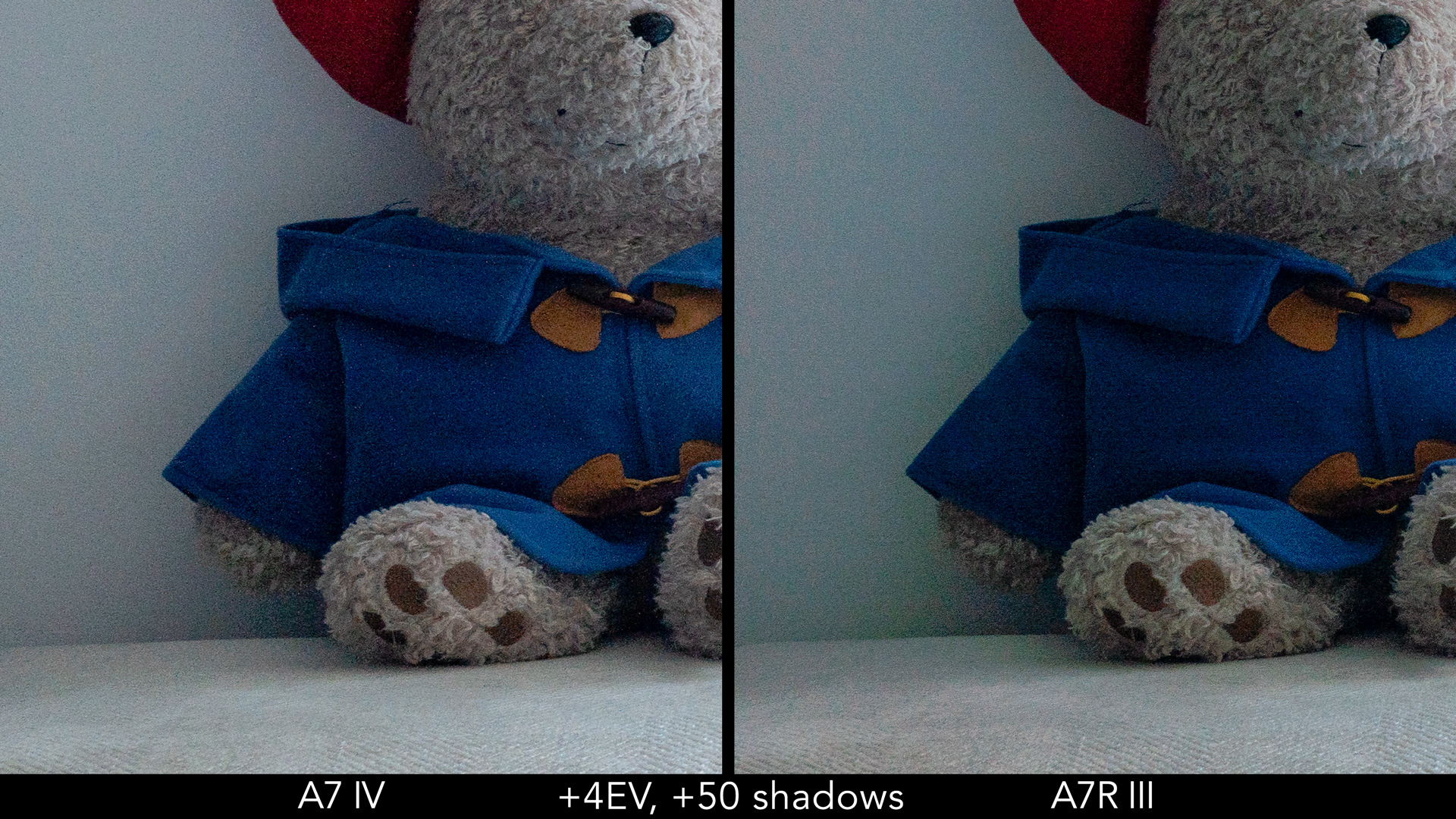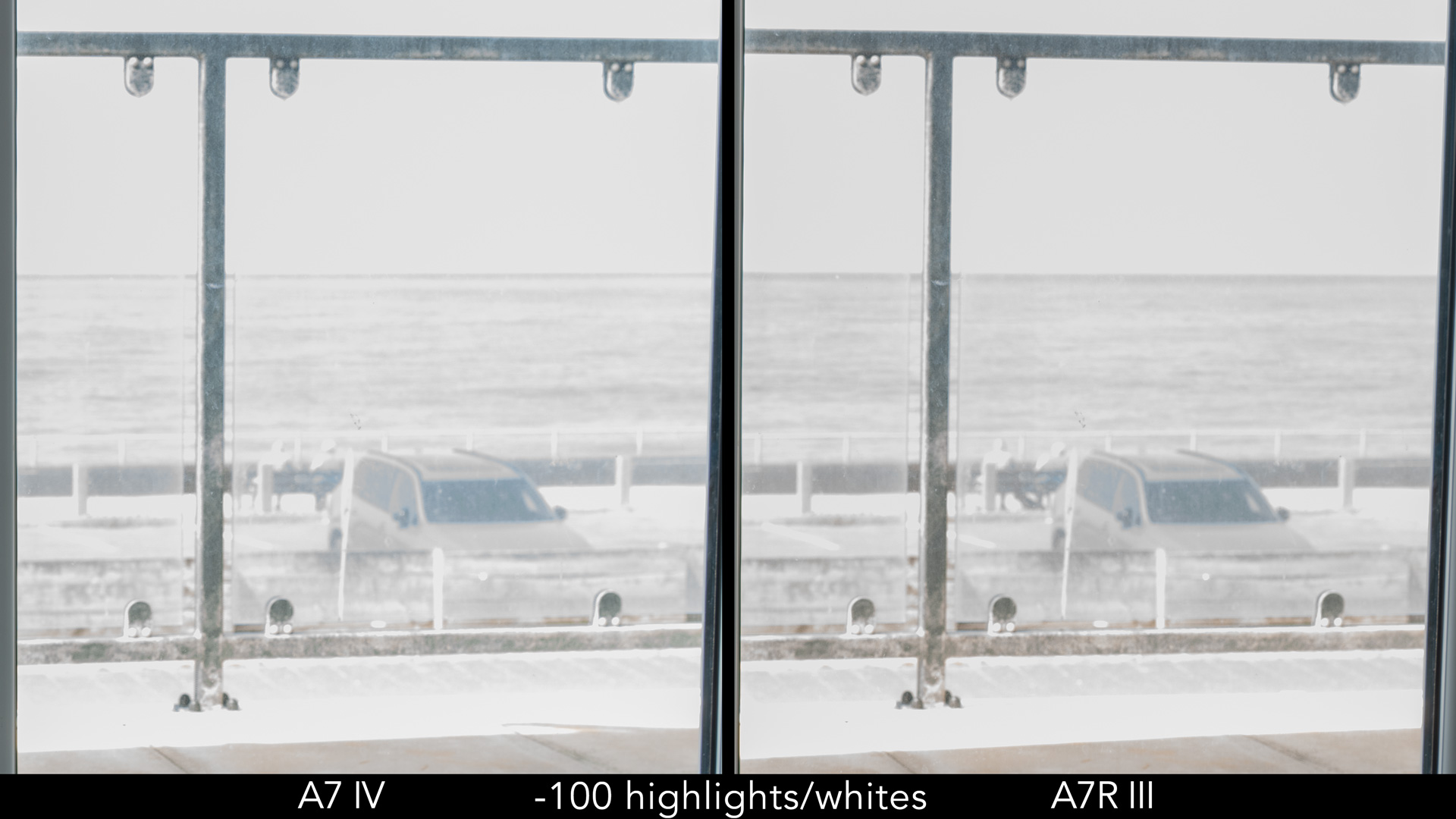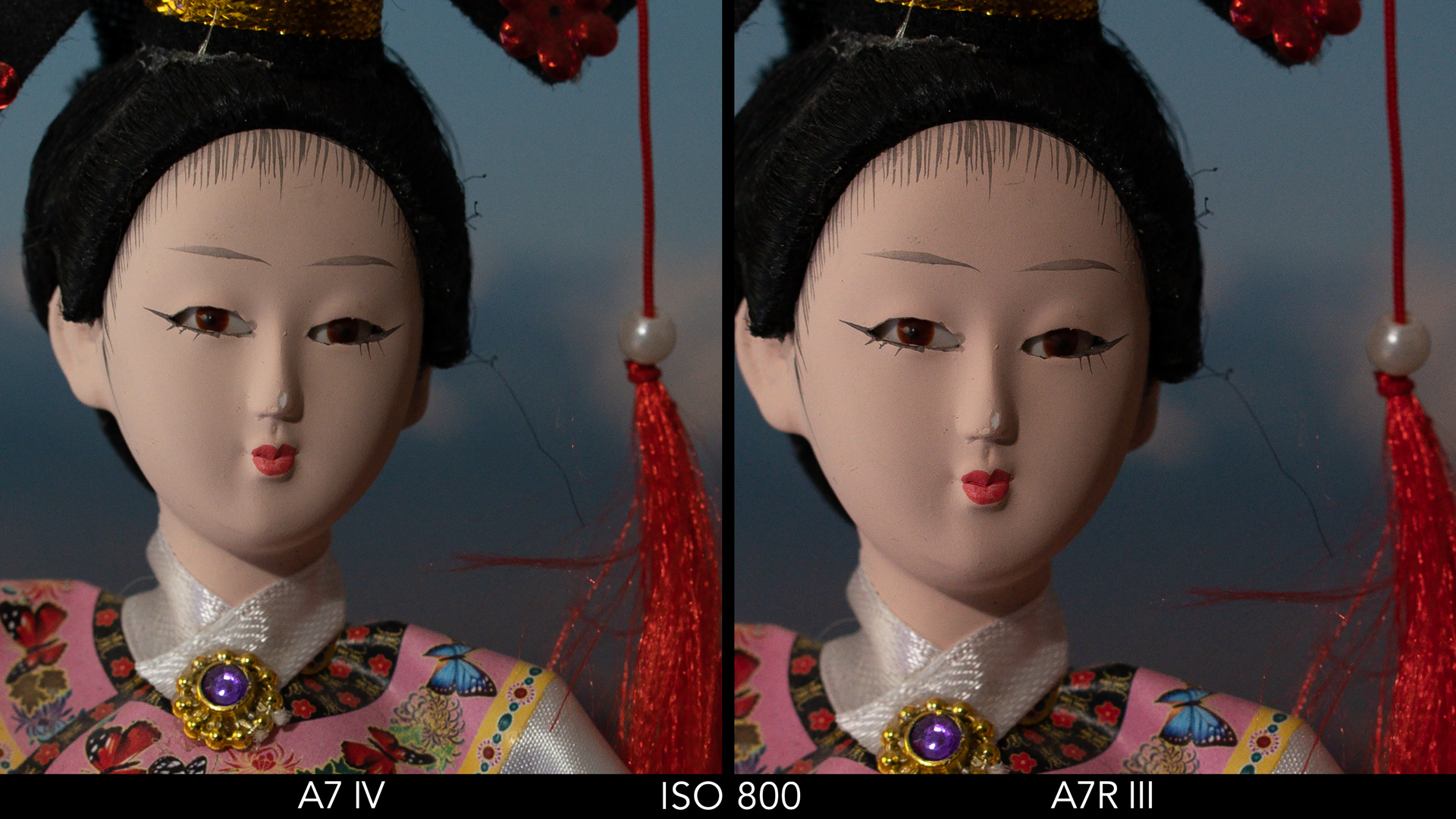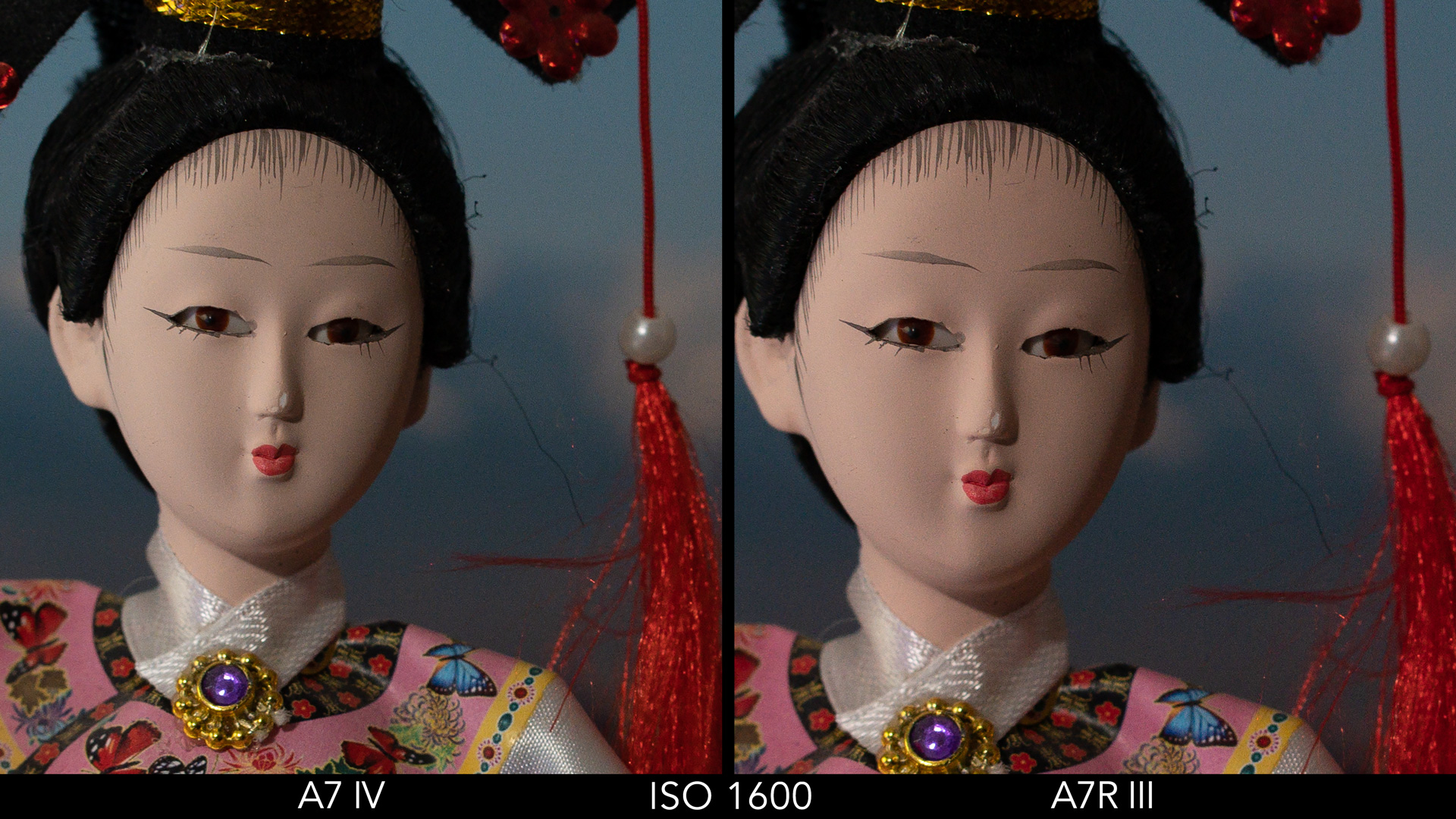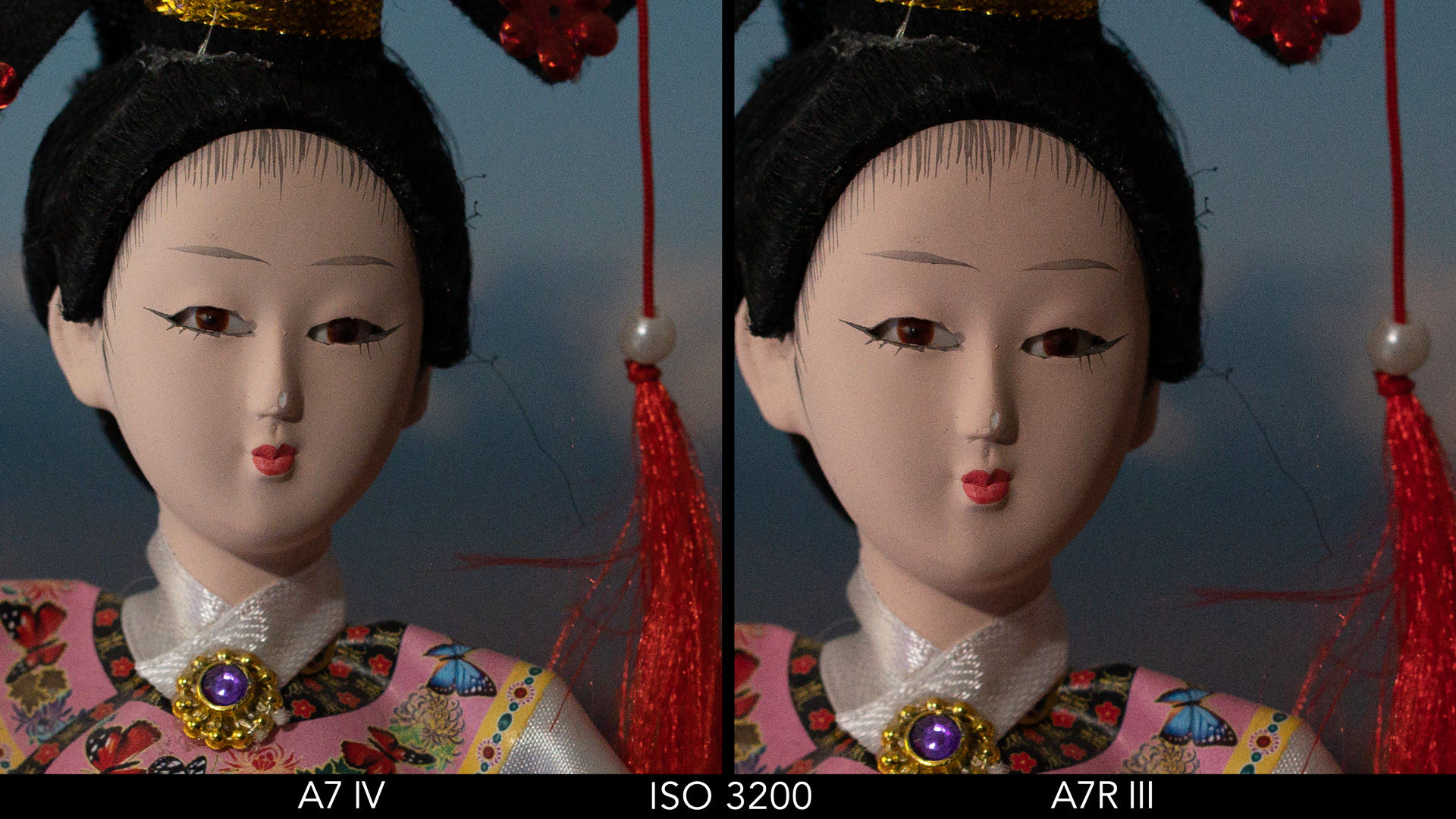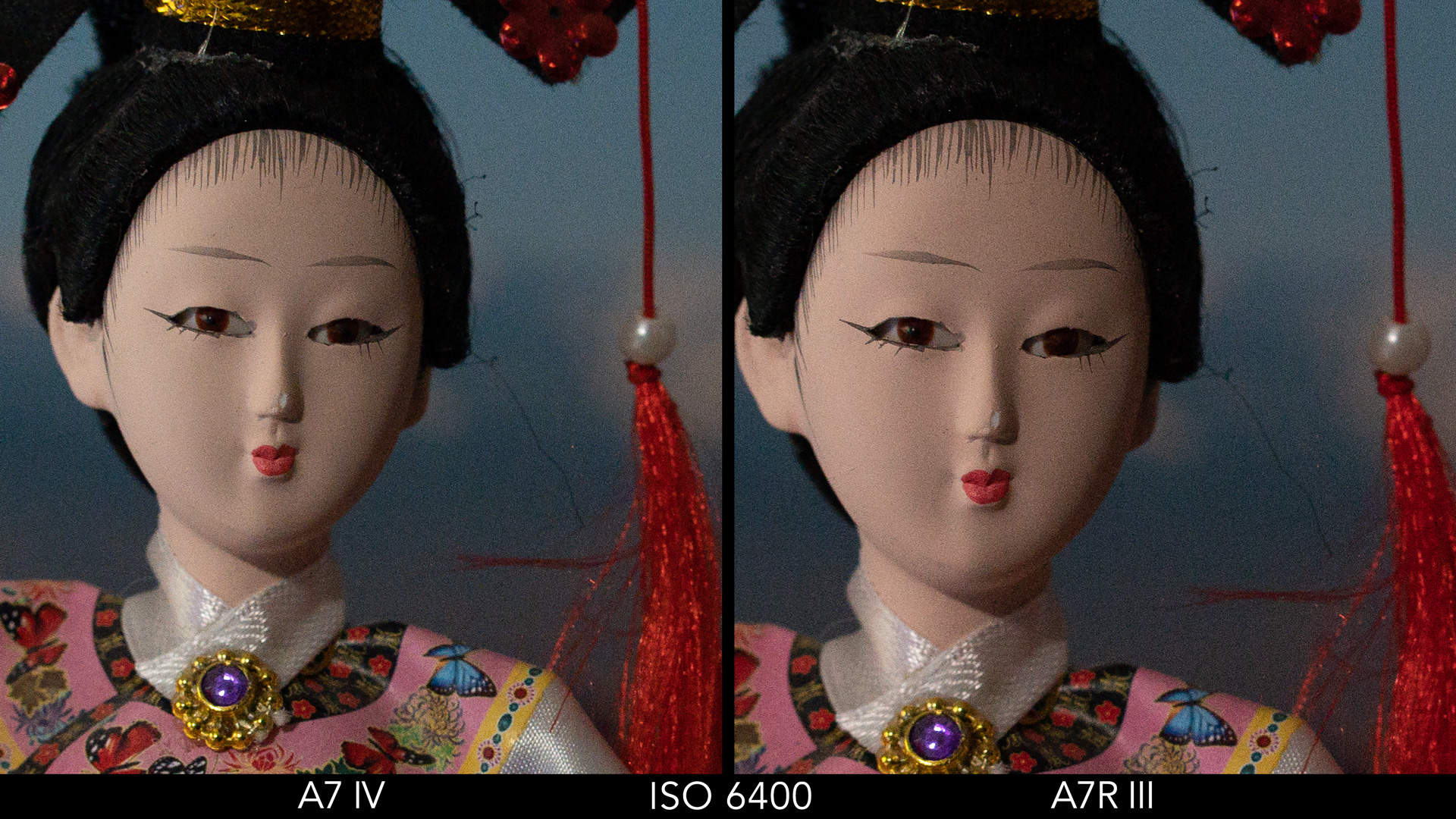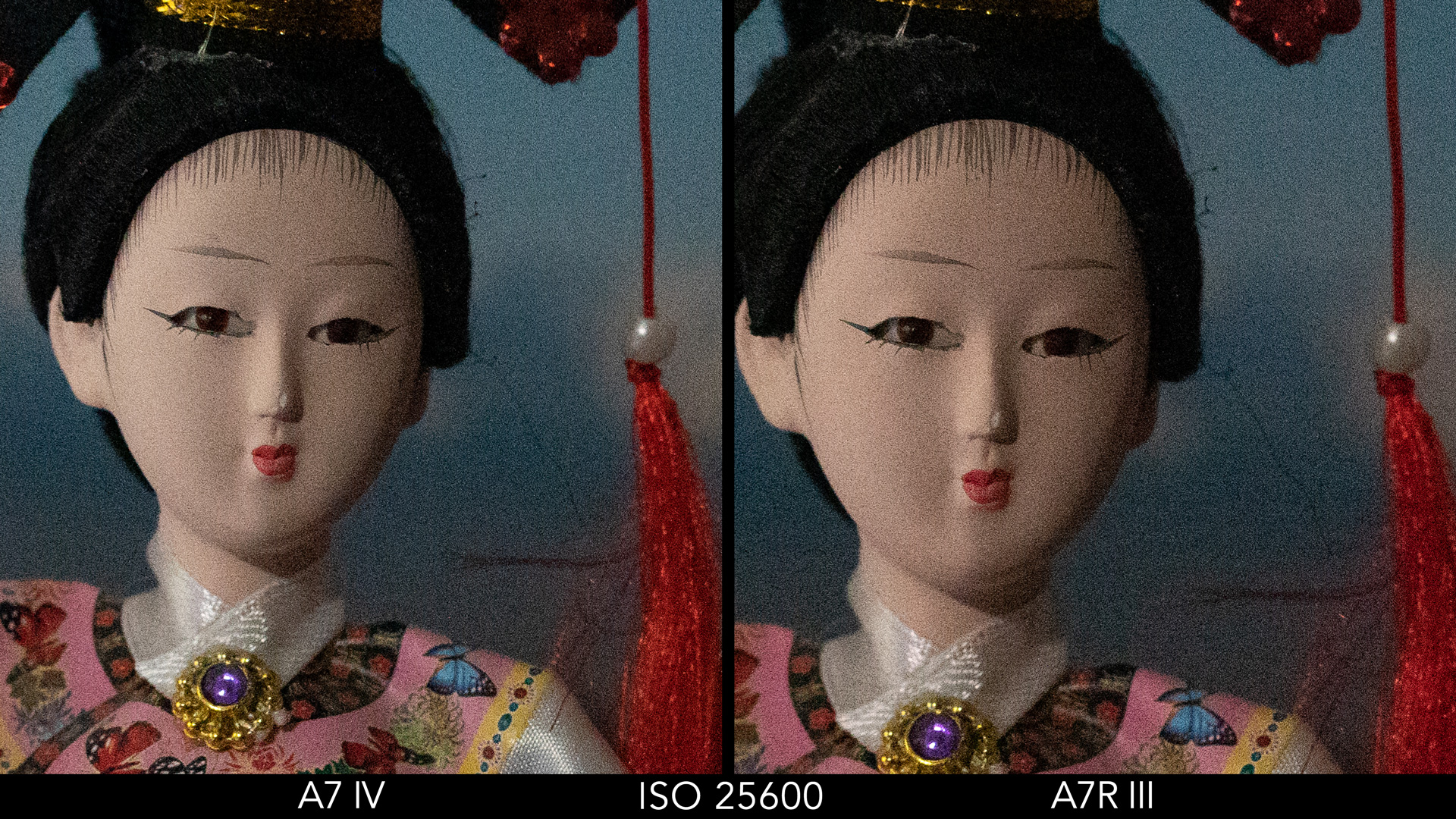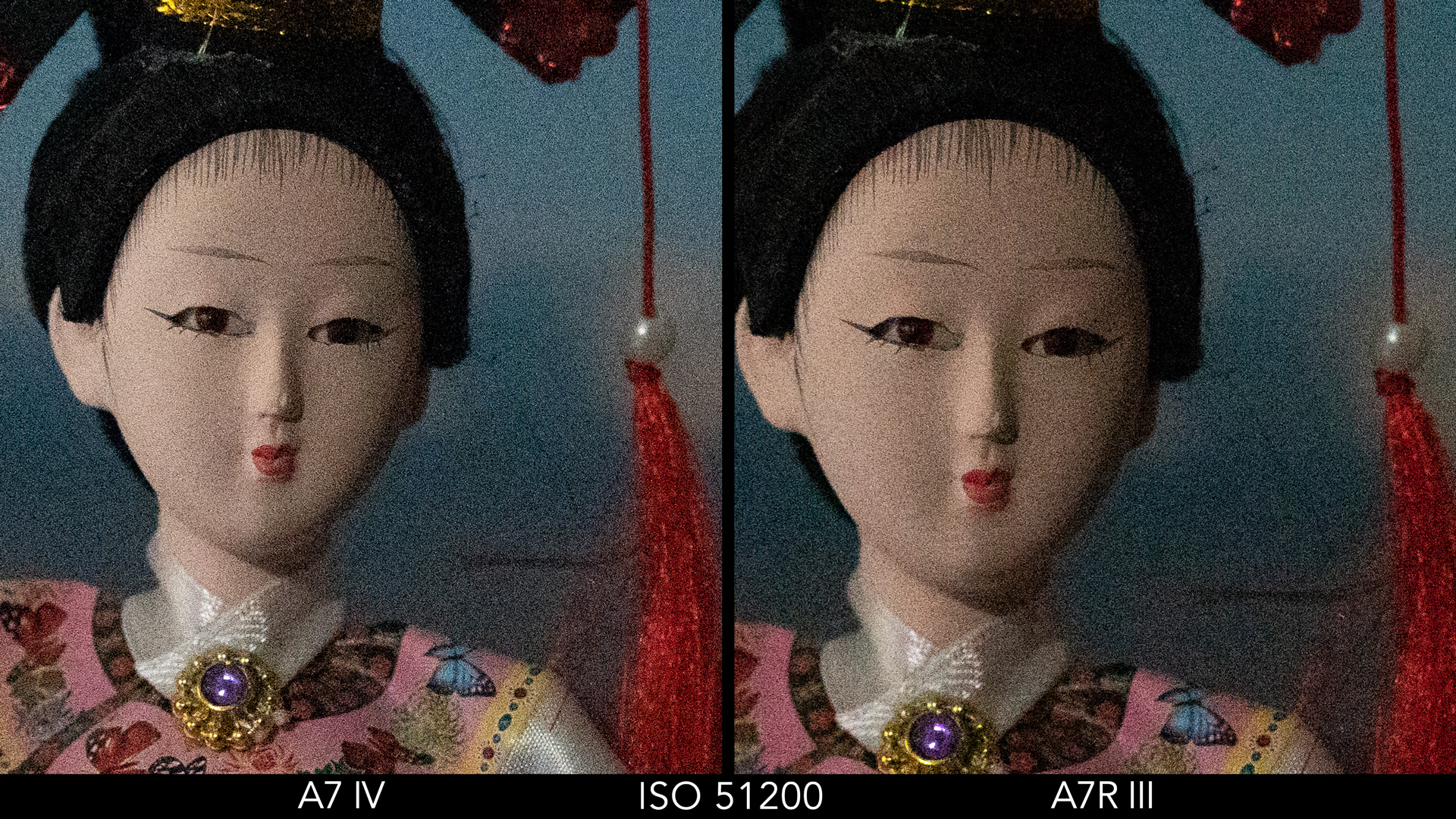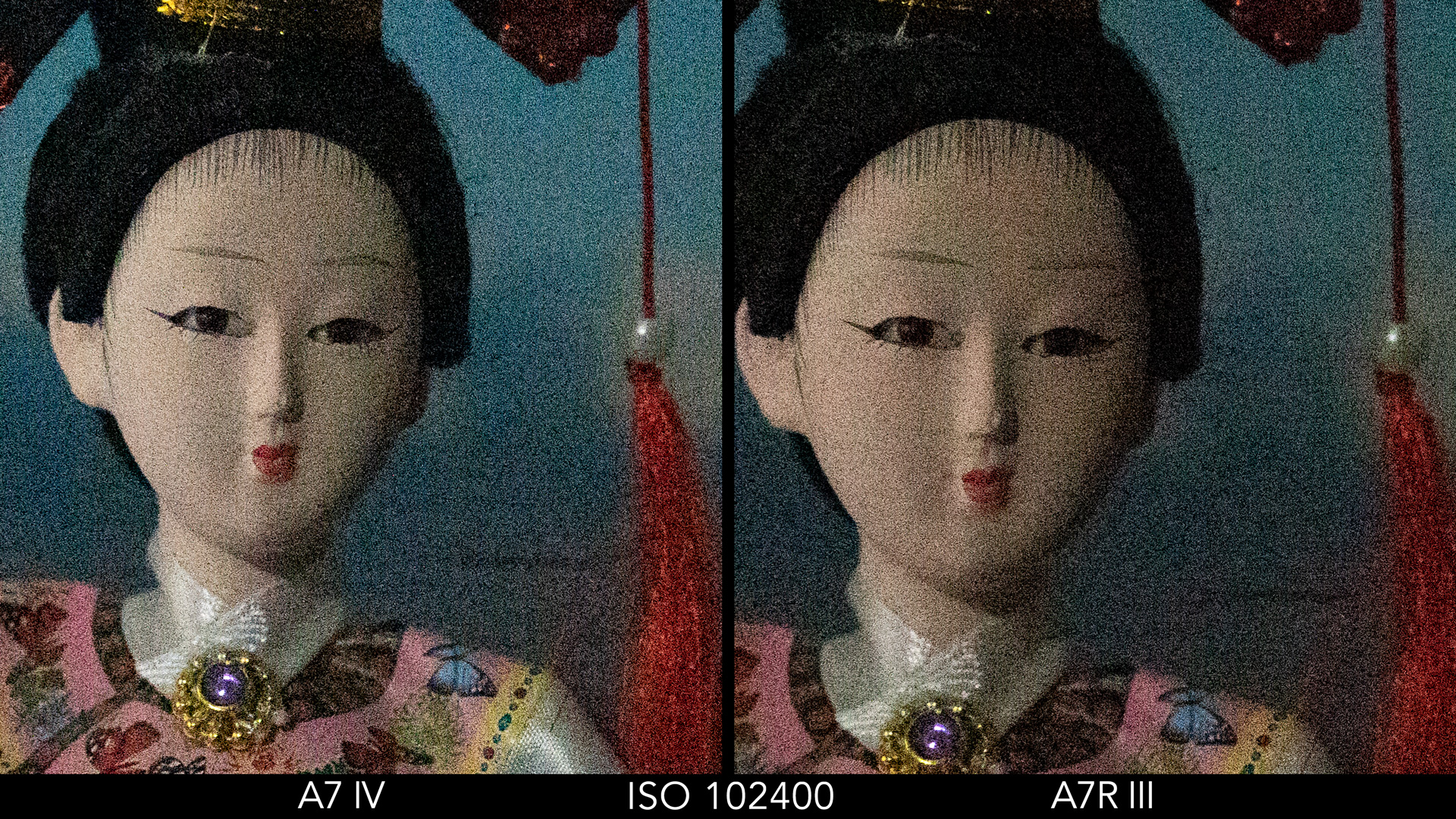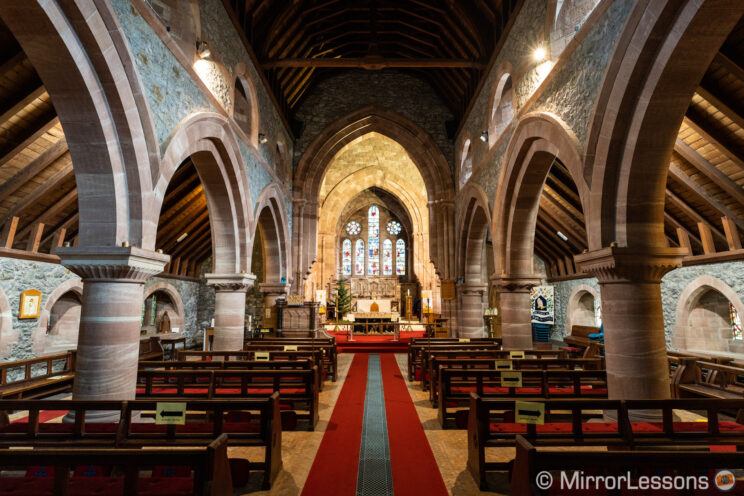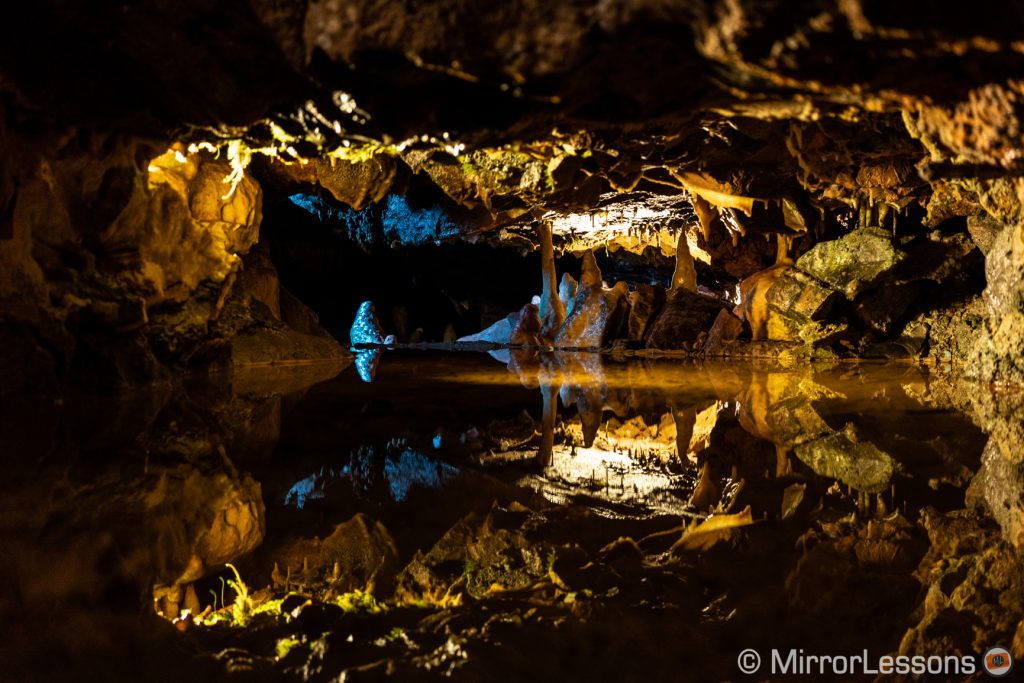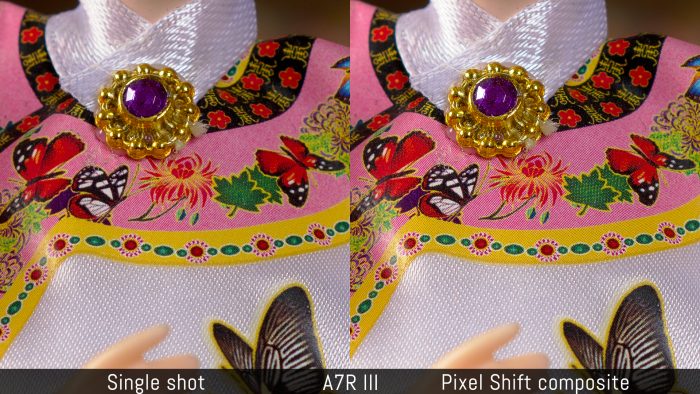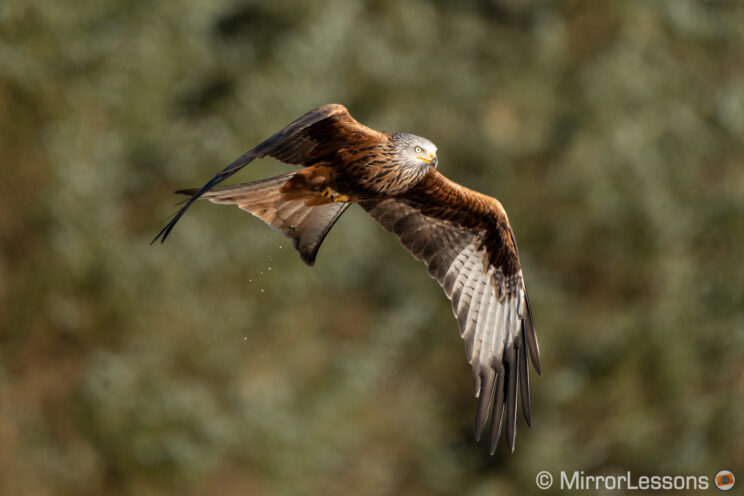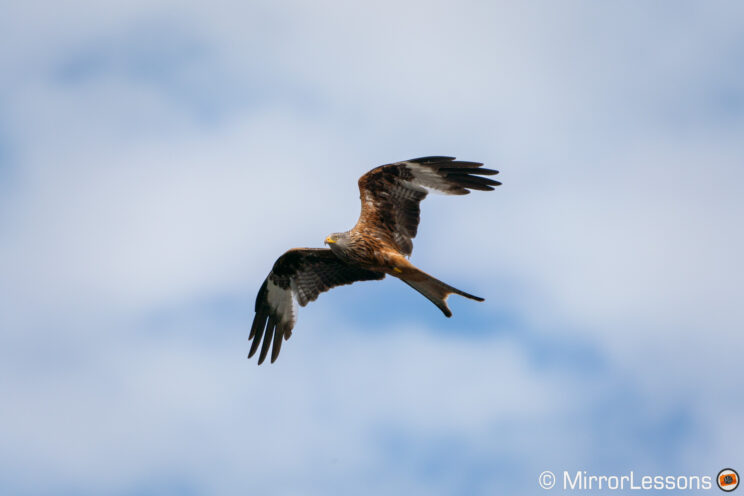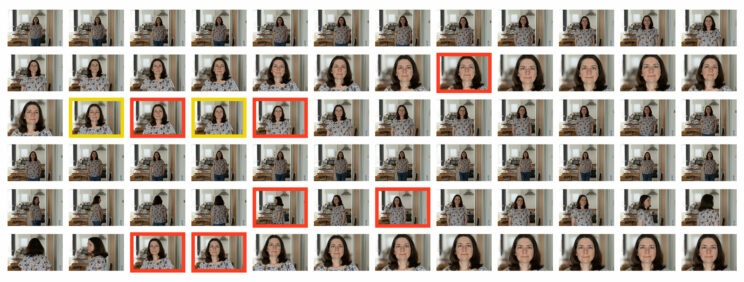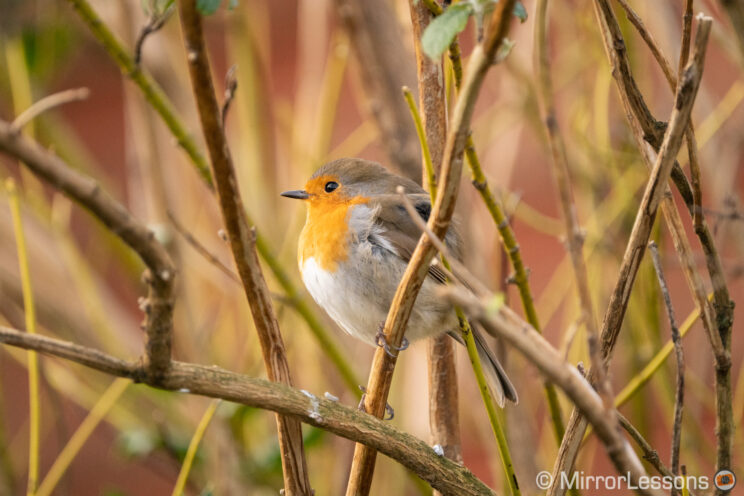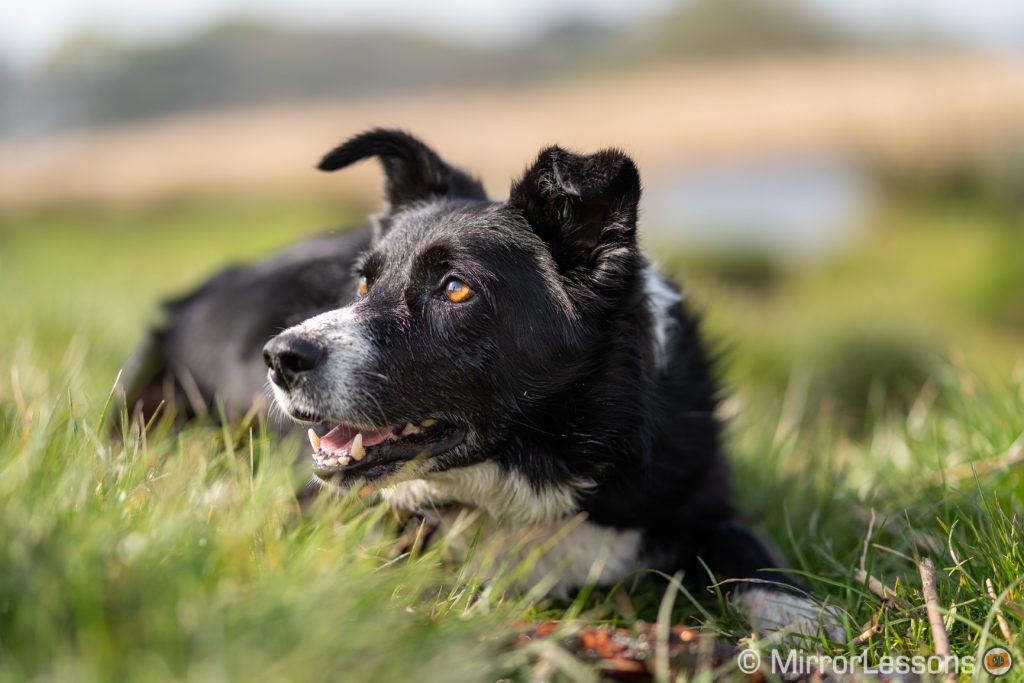The A7R III came out in October 2017 and is still a very popular full frame camera today, thanks to its excellent image quality.
Of course when it comes to technology, a four year gap is significant and the new products that arrived in 2021 have made some interesting progress. This also includes the A7 IV.
In this article, we compare old and new to see exactly how much of a difference there is.
Editor’s note: this article has been upgraded to a complete comparison with side-by-side tests and real-world experience.
A7R III vs A7R IIIA
The original A7R III has been discontinued and replaced by the A7R IIIA. The differences are minor, with the most noticeable thing to highlight being the extra resolution of the LCD monitor (2.36M vs 1.44M dots). An easy way to distinguish them is the absence of the Sony logo beneath the LCD monitor on the ‘A’ version.
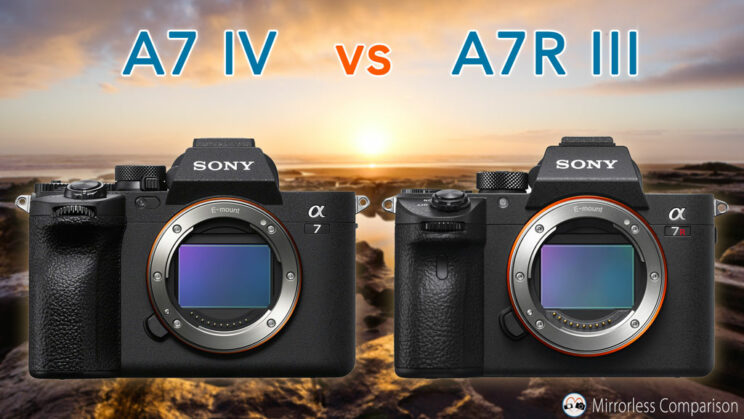
Ethics statement: the following is based on our personal experience with the A7R III and A7 IV. We were not asked to write anything about these products, nor were we provided with any sort of compensation. Within the article, there are affiliate links. If you buy something after clicking the link, we will receive a small commission. To know more about our ethics, you can visit our full disclosure page. Thank you!
TABLE OF CONTENTS
– The 10 Main Differences in a Nutshell
– Main Specs
1. Image Quality
2. Extra Colour Resolution
3. Autofocus
4. Speed and Buffer
5. Video Capabilities
6. EVF and LCD
7. Design and Controls
8. Memory Cards
9. More Features
10. Price
– Video Review
– Conclusion
The 10 Main Differences in a Nutshell
- Image quality: the A7 IV has a small edge in terms of dynamic range perfromance (shadows), but the R3 models defends itself really well at high ISOs, in addition to offering more resolution. The mark 4 model inherits the latest colour profiles, with a bit more green overall, and less red on skin tones.
- Extra colour resolution: both cameras feature 5-axis stabilisation with very similar performance, but the A7R III takes advantage of this technology with a function called Pixel Shift Multi Shoot, a tripod-only mode that increases the colour resolution.
- Autofocus: the A7 IV has more AF points and comes with the latest software algorithm, which includes real-time tracking and Eye AF for birds. It is faster overall and delivers a better keeper rate for portraits, as well as birds in flight.
- Speed and buffer: they share the same maximum speed of 10fps, but the A7 IV has better buffer capabilities when using the CFexpress card.
- Video capabilities: the A7 IV has no recording limitation, and offers more advanced settings such as 10-bit 4:2:2 internally, higher bitrates, and gives you the maximum quality in full frame mode, unlike the R3 model that delivers the best performance in Super35 mode. Dynamic range is comparable, and the R3 defends itself well at high ISOs.
- EVF and LCD: the viewfinder is exactly the same, whereas the LCD has a different mechanism on the A7 IV (multi-angle) than on the A7R III (tilting only).
- Design and controls: the A7 IV has a larger grip, upgraded buttons and dials, and more customisation, as well as a much better organised menu system that can also be used with the touch screen.
- Memory cards: two SD card slots on each camera, but the A7 IV also takes one CFexpress Type A card in slot #1.
- More features: the A7 IV has extra functionalities for stills and video, such as variable shutter, breathing compensation, USB streaming and more.
- Price: the price is similar, if not equal, depending on the currency and location. However, the R3 model is more likely to receive discounts, and is easier to find second-hand.
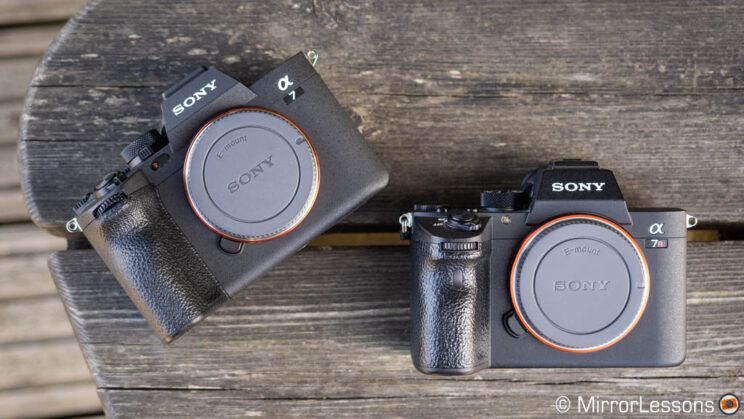
Main Specs
A7 IV
- Sensor: 33.0MP 35mm format BSI Exmor R CMOS
- Lens system: E-mount
- Weatherproof: Yes
- Internal Stabilisation: Yes (5-axis)
- Autofocus: Hybrid with 759 phase and 425 contrast detection points
- Continuous shooting: 3fps to 10fps with AE/AF Tracking
- ISO Sensitivity: 100 – 51200 ISO (pull 50, push up to 204800)
- Shutter Speeds: 1/8000 to 30s, Bulb
- Viewfinder: 0.5in OLED with 3.69M dots, 23mm eye point, 0.78x magnification and 120fps refresh rate
- Rear monitor: Multi-angle 3″ LCD (1.04M dots) with touch sensitivity
- Movie recording: 4K up to 60fps, Full HD up to 120fps, 10-bit 4:2:2 internal, S-Log, Cinetone and HLG gamma
- Built-in Flash: No
- Extra Features: WiFi, Bluetooth, Bracketing, Intervalometer, Wifi Tethering, USB streaming, Dual SD slots
- Dimensions: 131.3 x 96.4 x 79.8 mm
- Weight: 658g (including battery and memory card)
- Firmware version: 1.01
A7R III
- Sensor: 42.4MP 35mm format BSI Exmor R CMOS
- Lens system: E-mount
- Weatherproof: Yes
- Internal Stabilisation: Yes (5-axis)
- Autofocus: Hybrid with 399 phase and 425 contrast detection points
- Continuous shooting: 3fps to 10fps with AE/AF Tracking
- ISO Sensitivity: 100 – 32000 ISO (pull 50, push up to 102400)
- Shutter Speeds: 1/8000 to 30s, Bulb
- Viewfinder: 0.5in OLED with 3.69M dots, 23mm eye point, 0.78x magnification and 120fps refresh rate
- Rear monitor: Multi-angle 3″ LCD with touch sensitivity (1.44M dots for A7R III, 2.36M dots for A7R IV)
- Movie recording: 4K up to 30fps, Full HD up to 120fps, S-Log and HLG gamma
- Built-in Flash: No
- Extra Features: WiFi, Bluetooth, Bracketing, Intervalometer, Wifi Tethering, Dual SD slots
- Dimensions: 126.9 x 95.6 x 73.7 mm
- Weight: 657g (including battery and memory card)
- Firmware version: 3.10
1. Image quality
The A7 IV and A7R III incorporate a full frame sensor (35mm format) with a BSI design (back-illumination).
The first difference concerns the megapixel count: the A7 IV has 33MP, whereas the A7R III has 42.4MP. The mark 4 model also gets the latest image processor (BionZ XR) which is much faster than the previous generation found on the A7R III (BionZ X).
The A7R III doesn’t have a low-pass filter to maximise detail rendering. For the A7 IV, I found contrasting information on various review websites and in the answers given to customers by Sony itself. It seems that the A7 IV also lacks the AA filter, but to get a better idea, I did a moiré test.
As you can see below, it is more invasive on the R model, but there are visible patterns on the other camera as well. Note that I purposely exaggerated the saturation to make it more visible. In real-life, it would be more discreet than this.
Concerning dynamic range, the A7 IV has a small advantage in the shadows, where there is less colour shift following a severe 4 stop recovery.
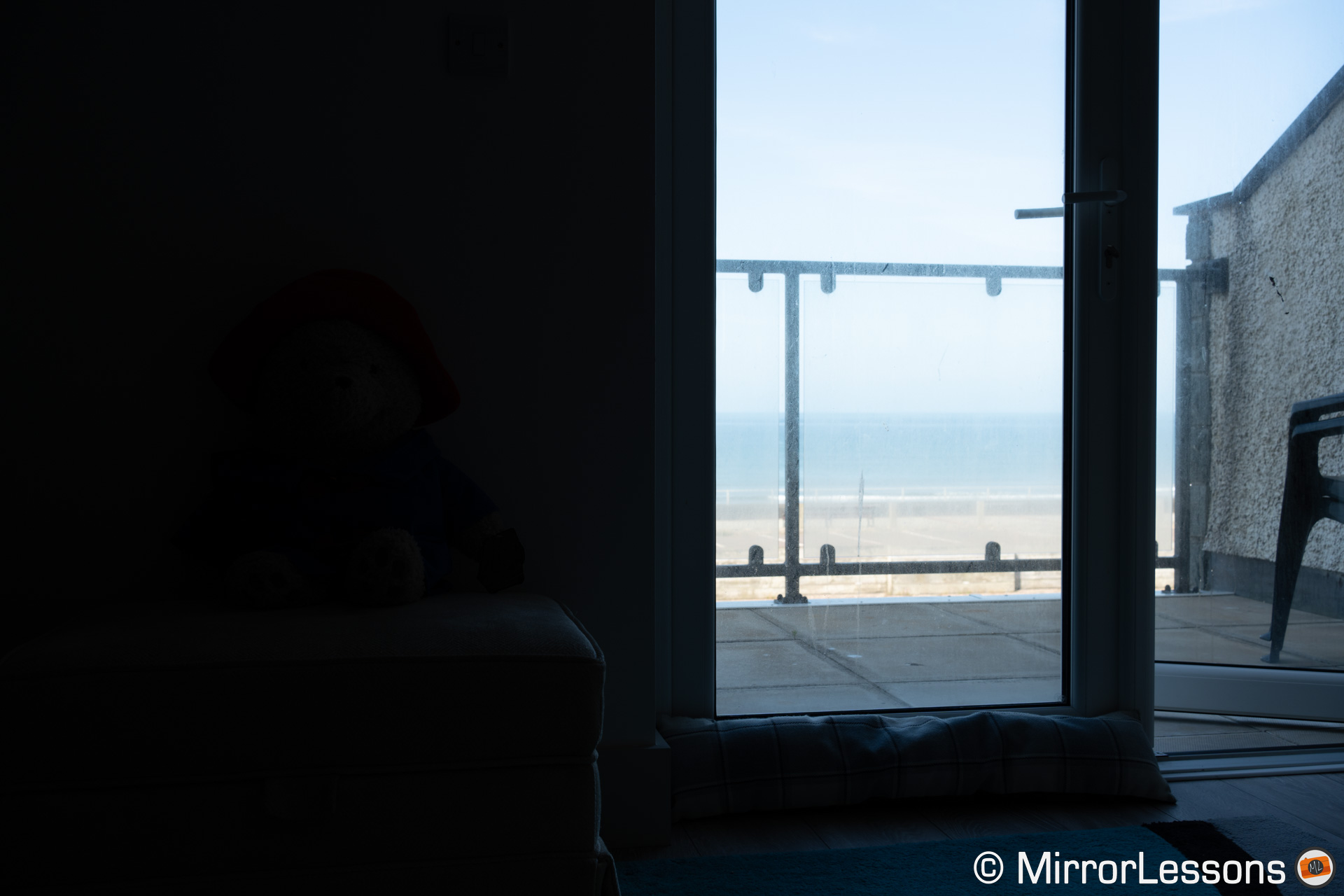
In terms of the highlights, the performance of the two cameras is basically the same.
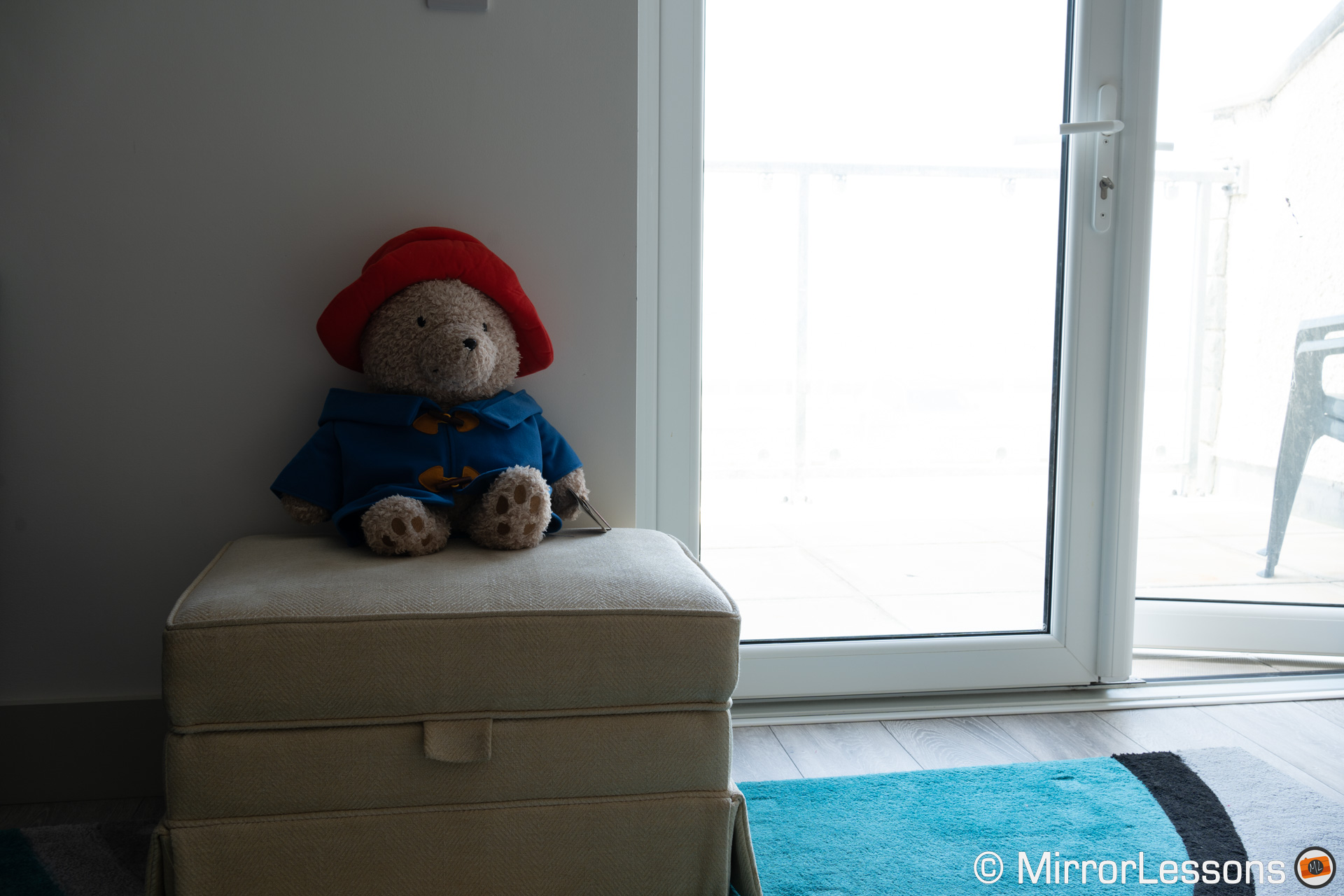
The ISO range is slightly wider on the mark 4 model, as you can see from the table below:
ISO
Normal range
Extended range
A7 IV
100 – 51,200
50 – 204,800
A7R III
100 – 32,000
50 – 102,400
The results from the two cameras are pretty much comparable. Noise is well contained up to 6,400 ISO. After that, it becomes more noticeable but the quality remains acceptable up to 25,600 ISO. Then, the higher values start to show a visible loss of details and colour accuracy, and the noise becomes unpleasant to the eye.
There are a few other things to highlight when it comes to image quality.
The A7 IV features the new picture profiles, called Creative Looks, which replace the older Creative Styles found on the A7R III. The overall colour palette on the new camera shows an inclination towards green rather than magenta, as you can notice below (look at the hill specifically).
With skin tones, the A7R III produces a more reddish look with less smooth transitions between the various shades of colour. Also pay attention to my lips: they are less vivid in the A7 IV image.
On the mark IV model, you will also find the HEIF format (HDR 10-bit still image), in addition to JPG and RAW.
Another welcome addition on the A7 IV is the possibility to shoot with Lossless Compressed RAW files, in addition to Compressed and Uncompressed. On the R3 model, the Lossless option is not available. Below you can see how big each RAW version is.
RAW Quality
A7 IV
A7R III
Uncompressed
68MB
85MB
Lossless Compressed
38MB
–
Compressed
35MB
43MB
2. Extra colour resolution
The A7 IV and A7R III have in-body image stabilisation, also known as 5-axis stabilisation, with a rating of 5.5 stops of compensation.
The performance for still photos is very similar overall. Sharp pictures taken hand-held around 1/4s are possibile, but the two cameras are more trustworthy with speed of 1/10s or faster, when the keeper rate increases to a decent 50/60%.
Unique to the A7R III is the possibility to use the stabilisation technology for another purpose: increasing colour resolution.
When the Pixel Shift Multi Shooting mode is enabled, the R model takes four images in a row and moves the sensor’s position by one pixel between each frame.
Then, when compositing the four images in post with the Sony Imaging Edge software, you obtain a photo that retains the same resolution of 42MP, but with more colour resolution because each point on the digital photo was captured by at least one red, blue and green pixel.
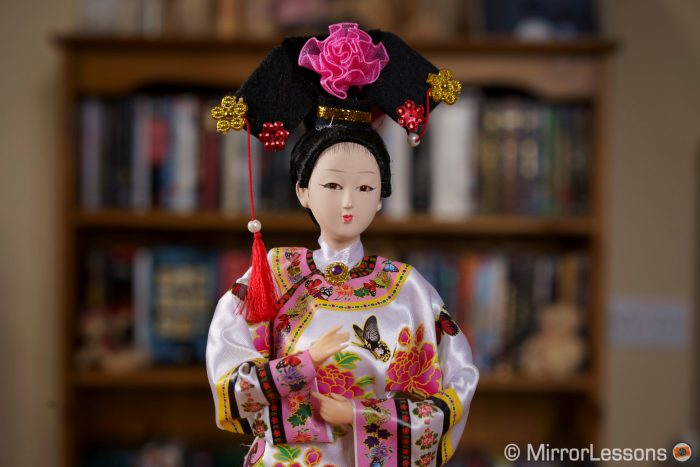
Not only do small details become more defined, but this method also gets rid of any moiré that could be present in a single shot.
Keep in mind that this mode must be used with the camera fixed on a tripod, and you will get unwanted artefacts if there are moving elements inside the frame.
3. Autofocus
The two cameras feature a hybrid autofocus system with phase and contrast detection, but there are a lot of differences to talk about, starting with the number of AF points.
- A7 IV: 759 phase, 425 contrast
- A7R III: 399 phase, 425 contrast
The phase detection points of the A7 IV cover an area of approximately 94% on the sensor, whereas the coverage is smaller on the A7R III (68%).

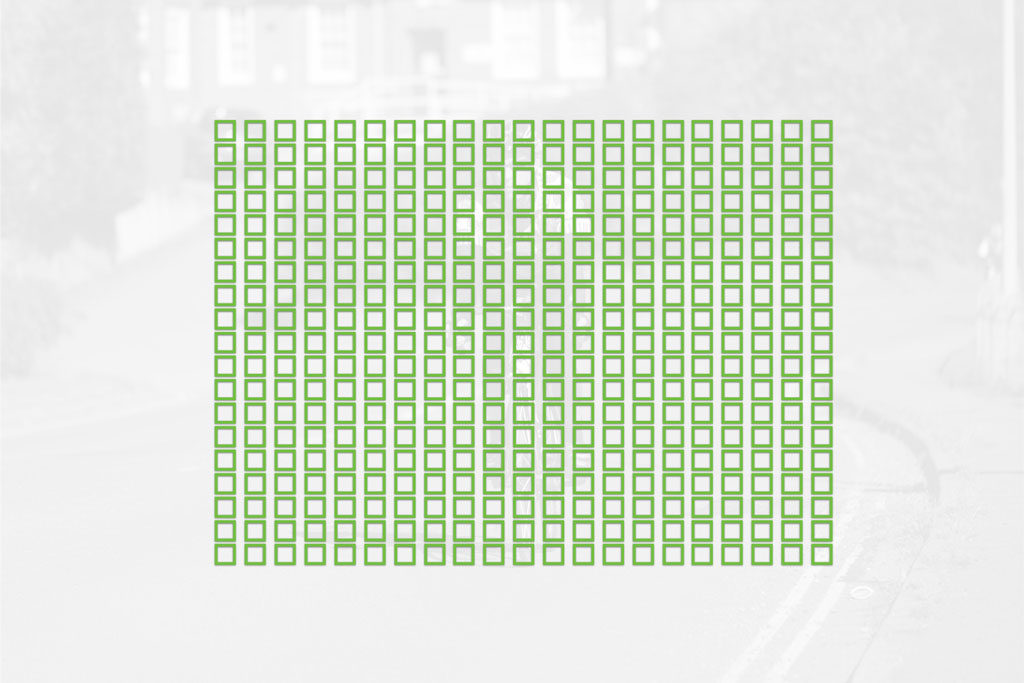
Then we have the software: the A7 IV features the latest algorithm with deep learning technology, which includes real-time tracking where the camera analyses the image on different levels (face, eyes, colour, depth and distance). It will prioritise the face or the eyes when detected, but is very capable of tracking the subject regardless.
Real-time tracking is very efficient on the A7 IV and I find it to be the best setting to use for erratic subjects such as birds in flight, where it gave me the best result. It also works great for sports or even a small child playing in the park.
The A7R III doesn’t have real-time tracking so it relies on the older Lock-On AF mode. It’s not reliable enough to be used with confidence, even with slow moving subjects. For sports or birds in flight, I get much better results by using the Zone Area.
Below you can see the score (keeper rate) the two cameras gave me with my red kite test. You can find out more about this test with the link below:
A7 IV
94%
99%
A7R III
71%
97%
Another test I made was with Face and Eye detection (for humans), to see how good both cameras can be in a situation where the subject is moving. The A7 IV gave me a much better keeper rate, with fewer out of focus images and more accuracy on the eyes overall.
The A7R III struggled more, and the lack of a more advanced tracking mode can be seen at the end of the sequence, when the subject turns around while walking, where there are more images out of focus.
Portrait photographers will also appreciate the possibility to prioritise the left or right eye when taking photos of a person with the A7 IV, an option you can assign to a custom button.
The A7 IV can detect a variety of subjects. Eye AF works for humans, animals and birds, whether you are in stills or video mode.
The Bird option in particular is very helpful for small subjects perched on a tree. You don’t need to move a small AF point and try to keep it on the head of the bird (like you have to do on the R model): you have much more composition freedom because the eye is tracked automatically across the entire frame. It works surprisingly well, even when the bird is partially covered by a branch.
On the A7R III, Eye AF is available for humans and animals (but not birds), and only when taking photos. The performance is reliable and precise enough, but the level of speed and accuracy is not at the same level as the mark 4 model.
In low light, the A7 IV has more sensitivity with a rating of -4 stops vs -3 stops on the A7R III (with a f/2 aperture).
In my final test below (admittedly, an extreme low light situation), the A7 IV managed to follow the subject at the beginning, then lost it completely before reacquiring focus at the end, where the light improves. The reason there aren’t a lot of pictures is because I set both cameras to focus priority, so they didn’t take any photos when they couldn’t follow the subject.
With the same parameters, the A7R III only took 4 shots. One at the beginning just when she was about to start moving, and three at the end after she stopped. The camera couldn’t follow the movement at all.

Another point concerns phase detection and the maximum aperture when working with medium or high burst speeds (6fps to 10fps). The A7 IV can work up to f/22, whereas the A7R III can’t go past f/8 (focus is locked on the first frame).
In video mode, the AF is faster on the mark 4 model overall. The absence of Eye AF (even for humans) on the R3 makes the performance unreliable: face detection alone often fails to keep the eyes sharp and prioritises the tip of your nose instead.
Finally, the A7 IV has more advanced settings to control the autofocus during movie recording, including the AF Assist option that allows you to change focus manually while working in C-AF mode.
4. Speed and buffer
Despite the difference in sensor resolution, the two cameras share the same continuous shooting speed of 10fps maximum. This speed works with C-AF and exposure tracking.
Up to 8fps (Hi setting), you see live view with blackouts in the viewfinder or LCD screen. At 10fps (Hi+ setting), there are no blackouts but live view is disabled: what you see are the images that have just been recorded, as opposed to what is happening live in front of your lens.
Another thing to understand is that the A7 IV can work at 10fps only when shooting JPGs or Lossy Compressed RAW. With other RAW settings (lossless compressed or uncompressed), the speed drops to 6fps.
By comparison, the A7R III remains close to 10fps even with uncompressed RAW.
Where the A7 IV has an advantage is with the buffer memory.
The new camera, thanks to its compatibility with CFexpress cards, can work at the maximum speed for more than 30s without slowing down. This remains valid with an SD card if you select JPG only, but with RAW the burst decreases after about 5 seconds. It then continues at a reduced speed of 5fps.
The A7R III can work at full speed for about 8 seconds, whether you are using JPG or or RAW (compressed). Then the R model slows down to about 4fps with RAW, or 2.7fps with JPG. Curiously, the camera is quicker at clearing the buffer when you work in RAW than with JPG.
5. Video capabilities
Here we find perhaps one of the major differences between these two cameras.
Note: some of the differences described in the paragraph below can be watched in the video version of this article, available on our YouTube channel. The video can be found at the bottom of this post, just before the conclusion.
First of all, let’s talk resolution and frame rates. The A7 IV can record 4K up to 30p with no sensor crop and full pixel readout without pixel binning (in other words, the best quality possible).
You can increase the frame rate to 50 and 60p, but for that you’ll have to accept a 1.5x crop on the sensor (aka Super35/APS-C mode). Full pixel readout with no binning still applies.

The A7R III can record 4K up to 30p only. You have the choice of working in full frame mode, or with the APS-C crop. In full frame mode, the camera does line-skipping, so detail rendering won’t be perfect and you can encounter some aliasing. For the best quality (oversampling), you need to use the crop mode.
Then we have bitrate, compression and colour depth, and here the A7 IV offers more possibilities. In short, you can record internally with more colour information (10-bit 4:2:2), as well as select a higher bitrate and better compression. In the table below, you’ll find all the main features.
A7 IV
A7R III
4K 30p
no crop
no crop
4K 60p
1.5x crop
–
Full HD
120p
120p
10-bit
H.264 (4:2:2)
H.265 (4:2:0)
HDMI (4:2:2)
–
Profiles
S-Log2/3
HLG
Cinetone
S-Log2/3
HLG
Bitrate
200M (Long GOP)
600M (ALL-I)
100M (Long GOP)
Rec. Limit
No
30min / clip
ISO
100 – 102,400
100 – 32,000
Concerning the quality at the various ISO levels, overall the A7R III produces thinner noise compared to that of the A7 IV, whose appearance is a bit more chaotic and distracting. It makes me think there might be some hidden noise reduction applied automatically on the mark 4 model, although I’m only speculating here.
At high values such as 12,800 or 25,600 ISO, the A7 IV preserves colours better, whereas the R3 footage loses vividness and saturation. All these comments are valid for the full frame and Super35 (APS-C) modes.
Another important difference is that the A7 IV doesn’t have a recording limitation, so you can go beyond the usual 30 minute limit per clip (which is a growing trend in the digital camera industry). In my test, the camera was able to record for two hours without any problem (ambient temperature was 21˚C).
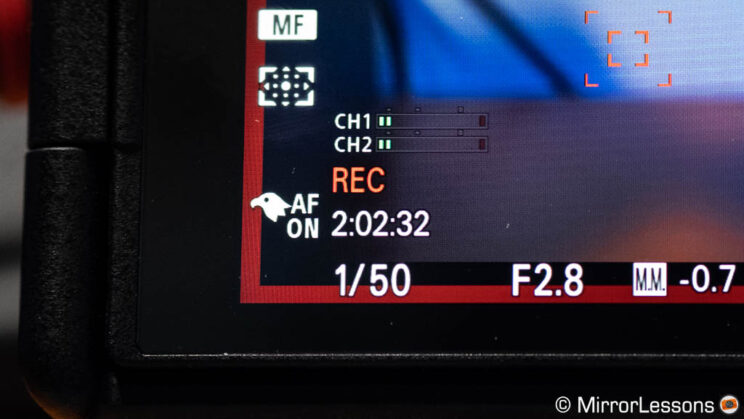
The Creative Looks, the new set of profiles available on the mark IV model, can give you more dynamic range than the old Creative Style found in the A7R III, depending on the setting used. With the R model, you have to be more careful to protect the highlights.
Of course, to take full advantage of the quality each camera has to offer, you need to switch to the Picture Profiles and gamma curves such as Cine, Hybrid Log Gamma or S-Log. The dynamic range is very similar when using HLG, whereas the A7 IV protects more highlights when recording with the S-Log profiles.
The A7 IV also has the S-Cinetone setting. As the name suggests, you get a nice cinematic colour palette with low saturation that you can either increase in camera or in post.
Rolling shutter looks a bit better on the R3 model when working in full frame mode, but gets worse in Super35 mode when moving quickly.
Concerning image stabilisation, the performance is similar once again, but the A7 IV has a few extra options. You can use the Active SteadyShot mode (1.1x crop) to improve the performance when walking for example, but the best solution in my opinion is to leave the stabilisation off and use the Sony Catalyst Browse software in post. The app can read the metadata from the camera’s gyro sensor, and produces more stable results when moving hand-held with the camera.
Other things worth highlighting on the mark 4 model are the Breathing Compensation function, which eliminates any breathing produce by the lens (see which lens is compatible on the Sony website), and the handy red frame that surrounds the LCD screen when recording.
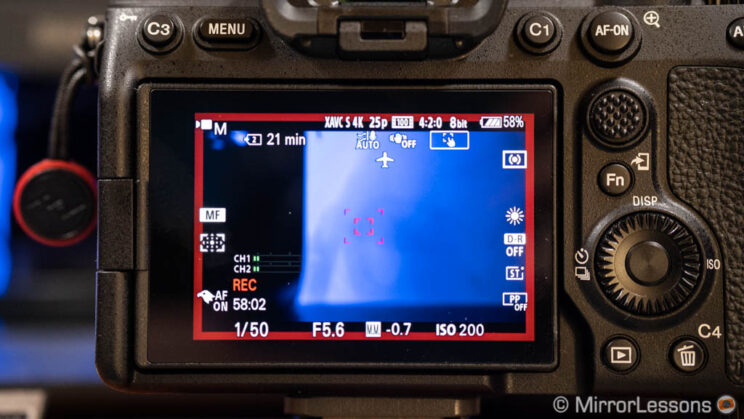
6. EVF and LCD
The two cameras share the same viewfinder, with 3.69M dots, 0.78x of magnification, 23mm eyepoint and a maximum refresh rate of 100Hz / 120Hz. It’s a good EVF with enough clarity and resolution to use in every situation. I also find it quite comfortable when wearing glasses.
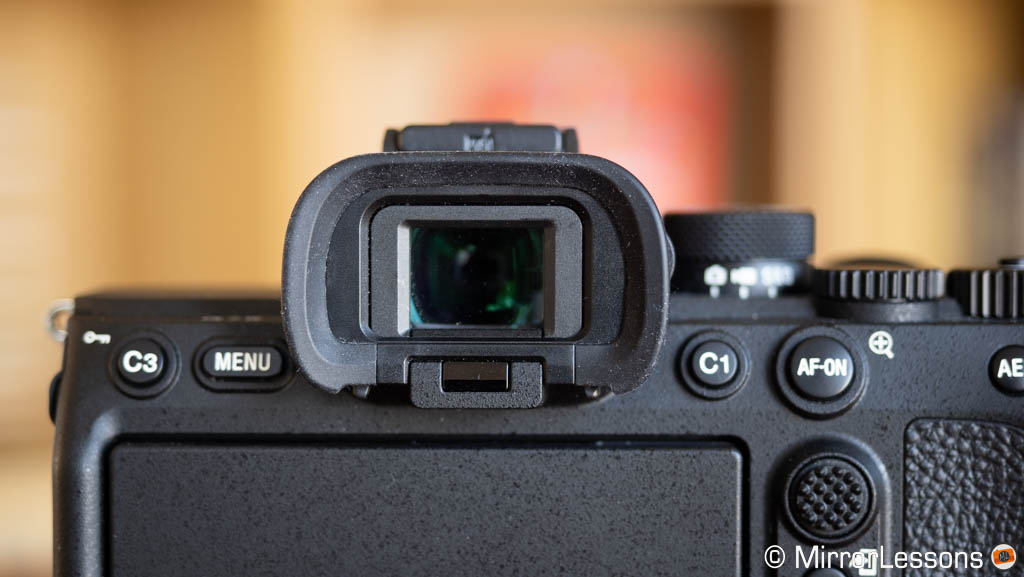
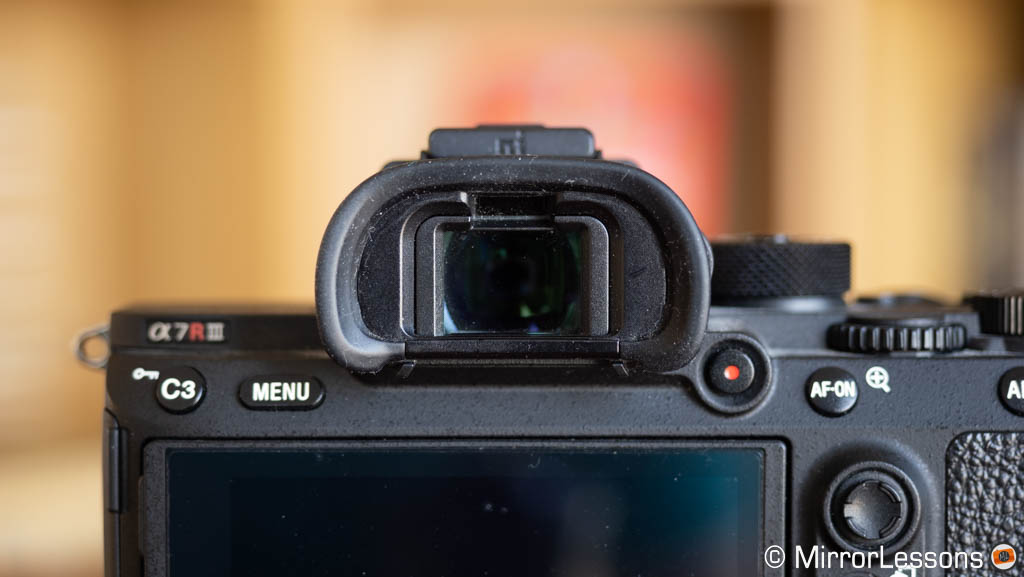
The rear LCD presents a few differences however. First, the one on the A7 IV has a multi-angle mechanism and includes the 180˚ orientation. On the A7R III, the monitor tilts up and down only (max. 90˚, approx).
Another difference is the resolution. The A7 IV screen has 1.04M dots, whereas the original A7R III had 1.44M dots. The replacement A7R IIIA has a much better monitor with 2.36M dots.
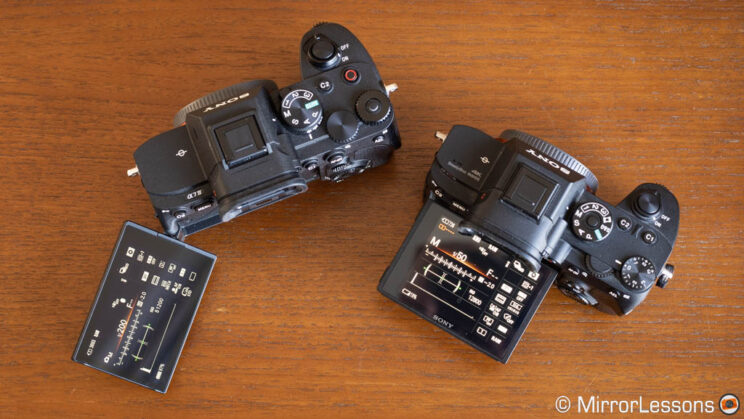
Both LCDs are touch sensitive but the A7 IV gives you more options, including navigating the menu. On the R model, you can only move the AF point or double tap to activate focus magnification.
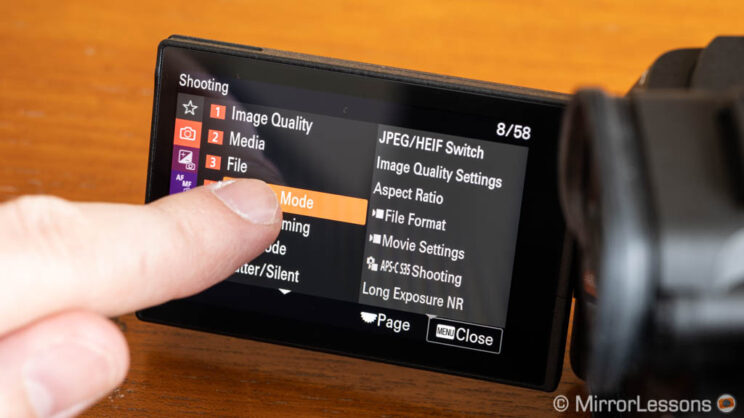
Finally, Sony has made a few improvements to the live view on the A7 IV. For example, you can use the exposure preview optimised for flash shooting and, in movie mode, the focus magnification is much sharper and more usable than that of the A7R III.
7. Design and controls
The A7 IV shares the same design as the A7S III and displays a few differences in comparison to the older A7R III.
The dimensions are similar, but the A7 IV is a bit bigger in order to accommodate the heat dissipation structure, which helps the camera to record 4K video for a long time without overheating. They are both weather-sealed.
- A7 IV: 131.3 mm x 96.4 mm x 79.8 mm, 658g
- A7R III: 126.9mm x 95.6mm x 73.7mm, 657g
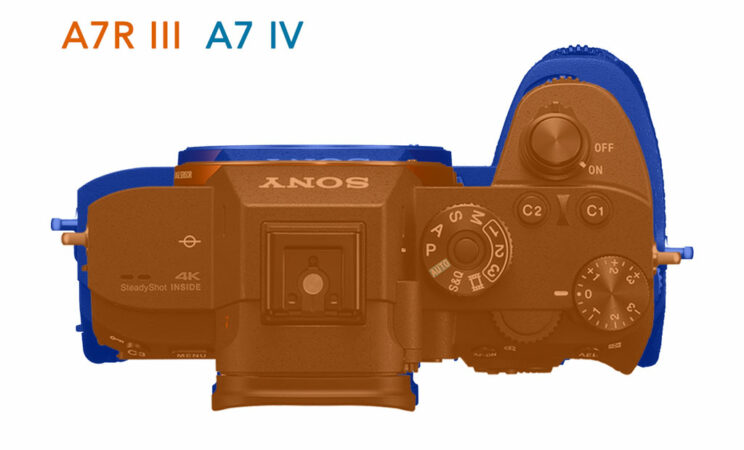
The new camera has a larger front grip, and some buttons are wider and have a more pleasant tactile feedback. The video recording button is found on top of the A7 IV (and can be customised), and on the rear of the A7R III (near the viewfinder). The texture on the AF joystick is also different and easier to grab.
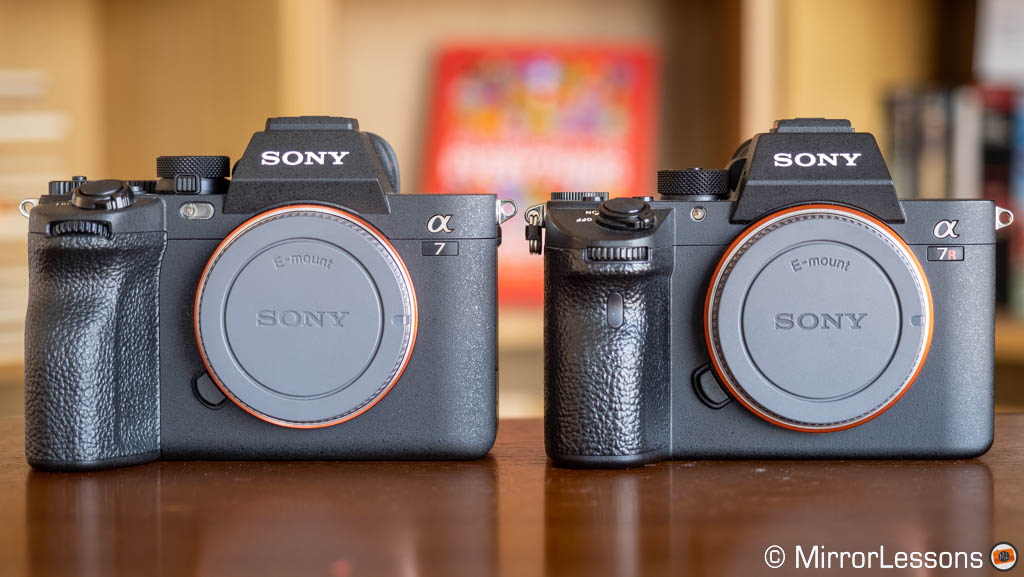
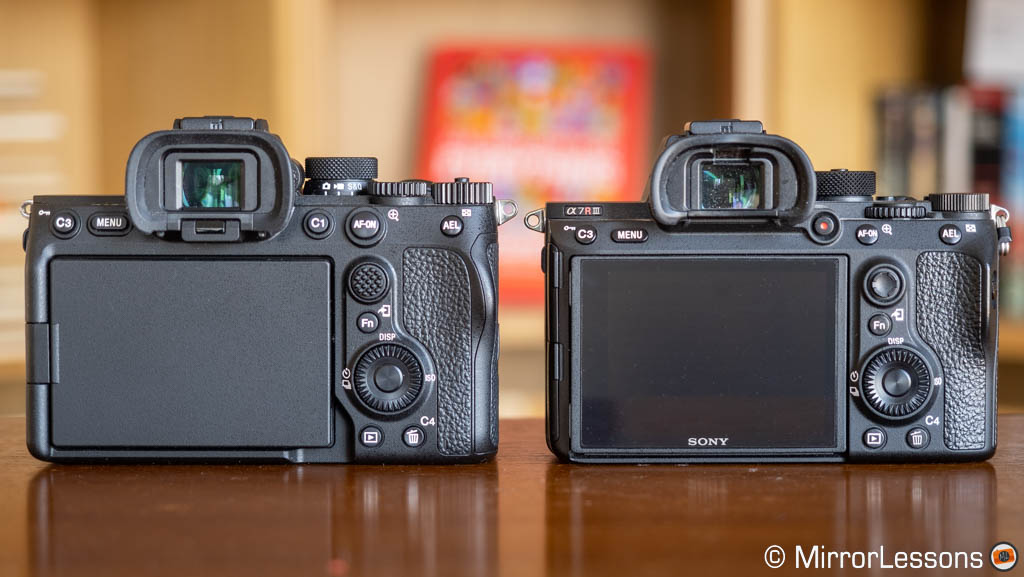
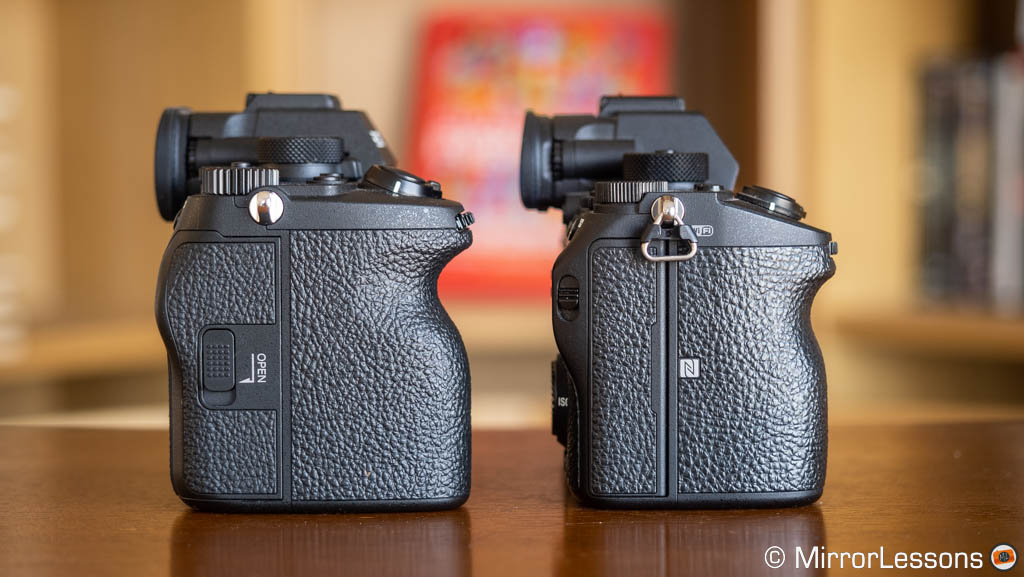
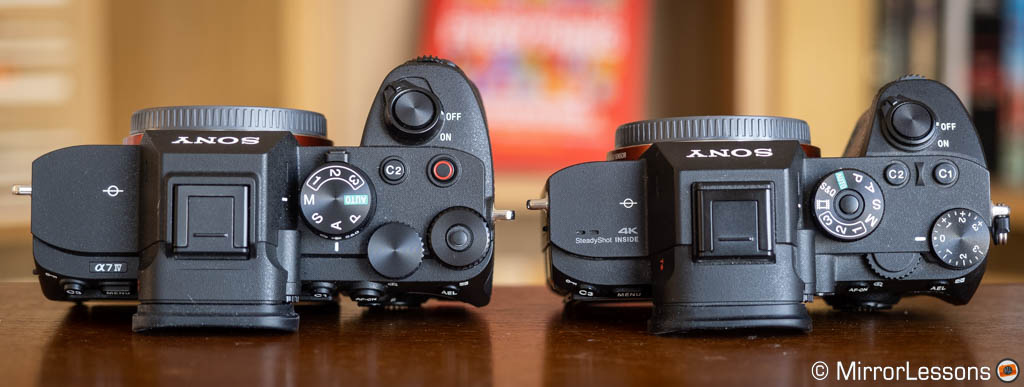
Both cameras have 12 custom buttons that can be configured independently for stills and video. Only on the A7 IV can the Function menu be set separately for both.
The A7 IV offers additional upgrades concerning customisation: the exposure compensation dial can be personalised on the A7 IV (and has a lock button), plus the camera has extra settings to configure it to you liking. For example you can change parameters such as aperture or ISO independently for the still and video modes.
Sony has also made it easier to go from stills to video on the mark IV model by adding a secondary dial under the main one on top. This means you can use the PSAM dial to change exposure method in movie mode (on the A7R III you need to go inside the menu for that), and even use the Memory Recalls for video. The latter is not possible on the R3 model.
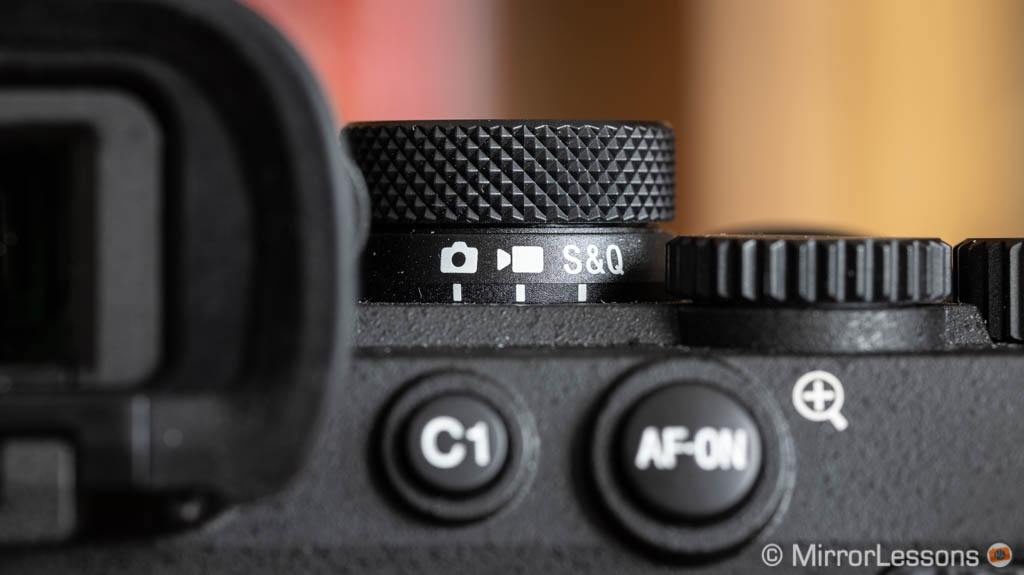
The A7 IV has a better menu system, with a more modern layout that is compatible with touch sensitivity. It is much better organised than the old menu found on the R3 model, and it also changes accordingly when going from photo to video mode.
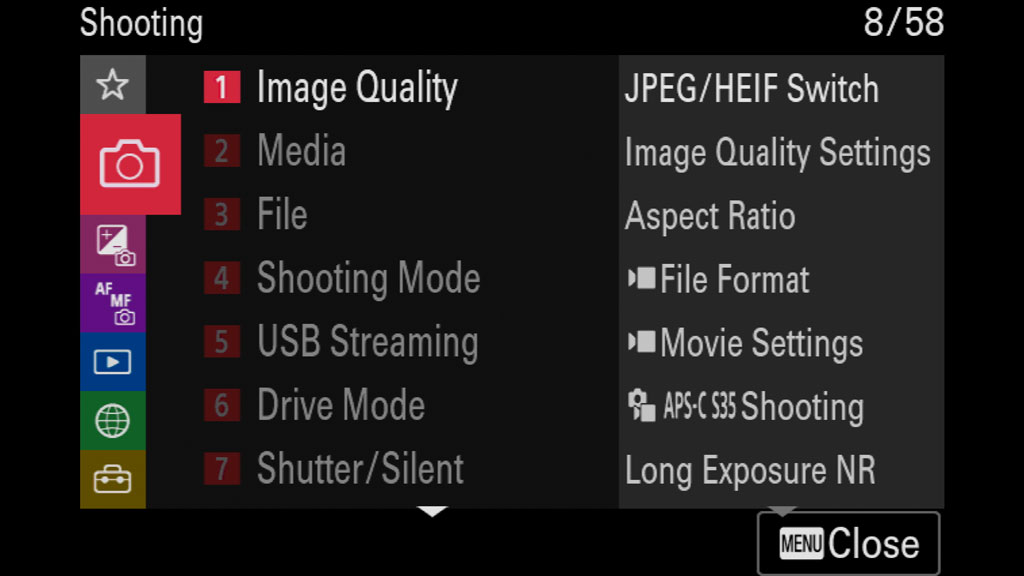
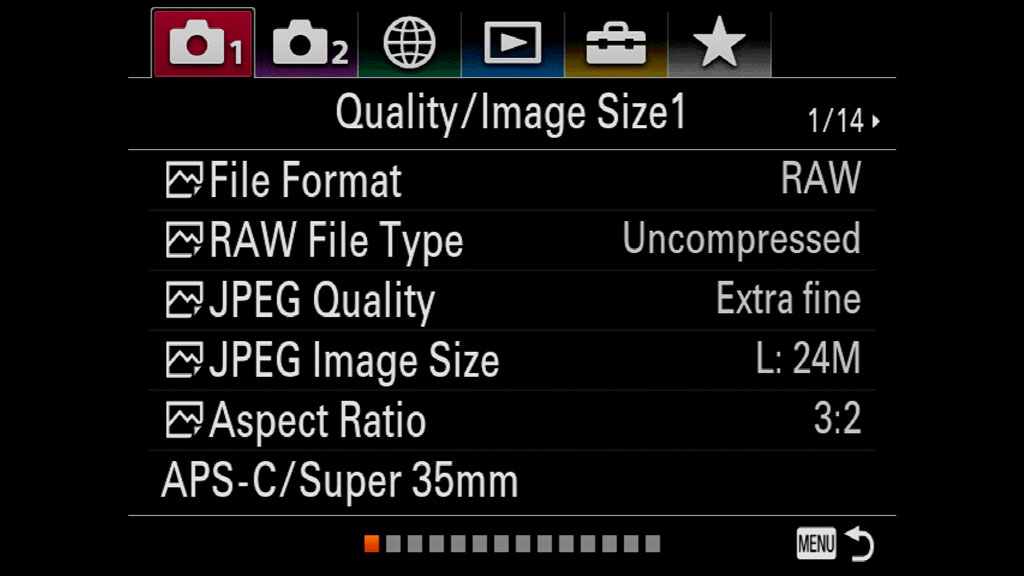
Other things that are only available on the A7 IV are:
- digital audio via the multi-function shoe on top of the camera
- full sized HDMI port (vs Micro on the R model)
- 10Gbps USB Type C port (vs 5Gbps on the R3)
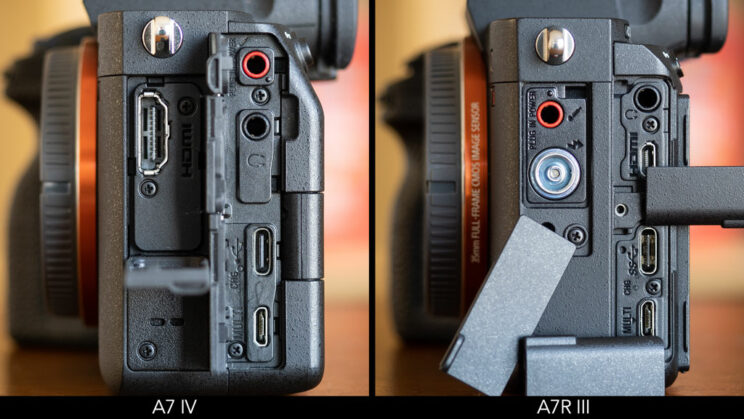
What remains the same is the battery type (NP-FZ100) with a similar performance, as well as audio in & out connections (3.5mm jack). Both cameras can be charged or powered via USB.
8. Memory cards
The two cameras can work with two memory cards simultaneously.
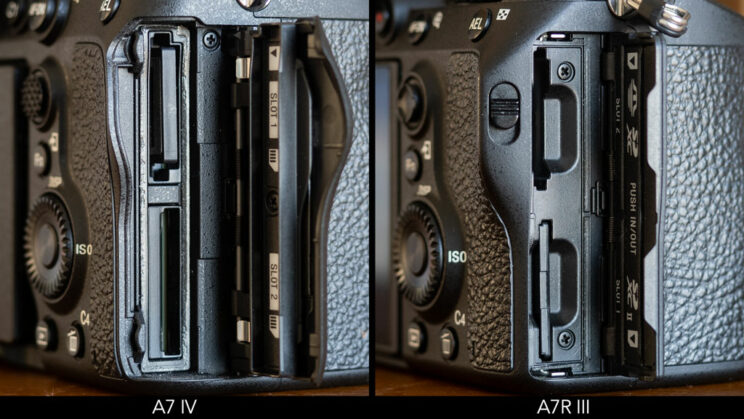
On the A7 IV, both slots are compatible with UHS-II SD cards, and slot nb.1 can also use the faster (and more expensive) CFexpress Type A card (not to be confused with Type B which is larger and won’t fit).
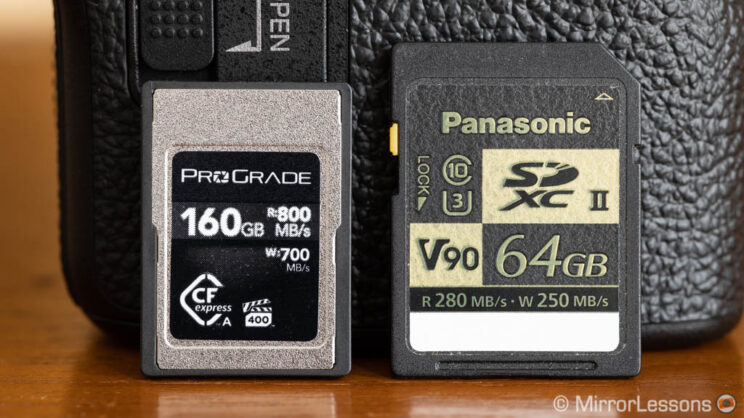
The CFexpress card gives you better buffer capabilities, as well as faster transfer speed to your computer when a compatible CFexpress reader is connected to a fast USB C port on your computer. The card is also required if you want to record 4K 60p at the maximum quality with the S&Q mode.
The A7R III has two slots for SD cards, but only slot nb.1 is UHS-II compatible.
9. More features
The A7 IV is a more recent product and, as you can expect, it has extra options you won’t find on older cameras such as the A7R III. These include, for example:
- Focus Map: you can visualise the depth of field with different colours (red is behind, blue is in front). It takes a little while to get used to it, but it is precise in operation.

- Variable Shutter: it allows you to select the shutter speed with more precision than the default 1/3EV step, which is useful to eliminate flickering of select light sources such as LED. It works for stills (when using the electronic shutter) and video.
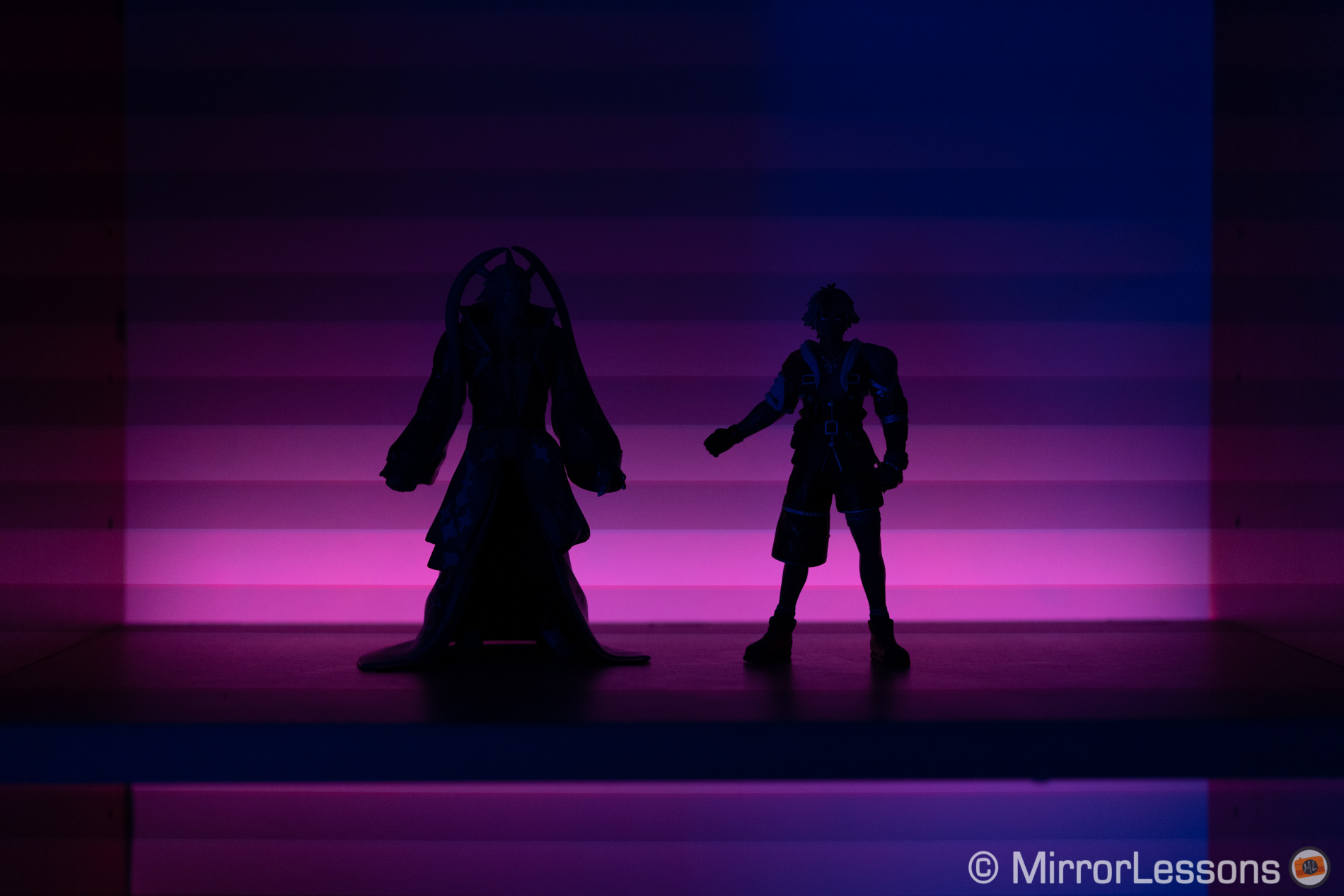
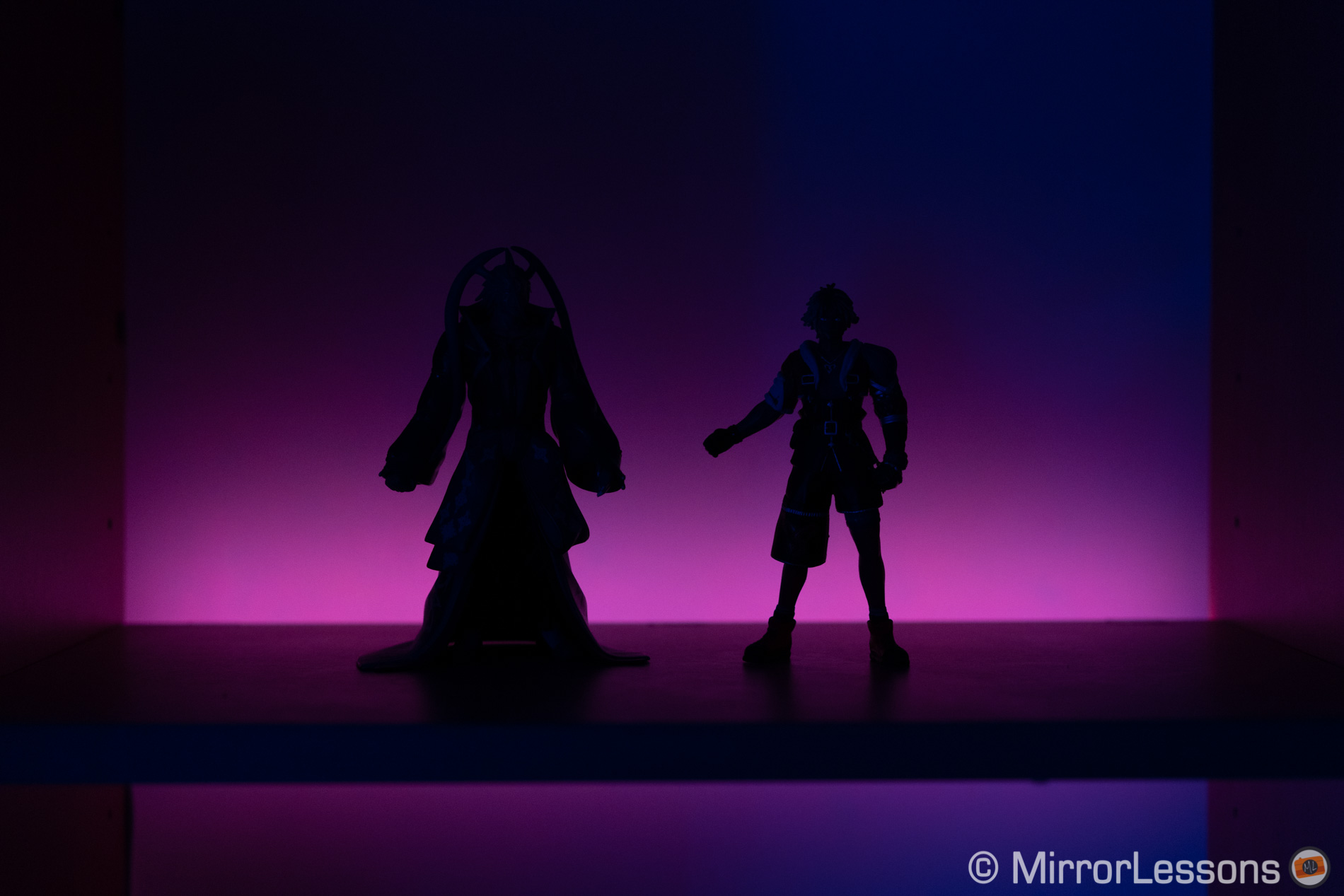
- Anti-dust Function: it keep the mechanical curtains down when the camera is powered off, covering the sensor. Remember that these curtains are quite fragile and you don’t want too much dust on them.
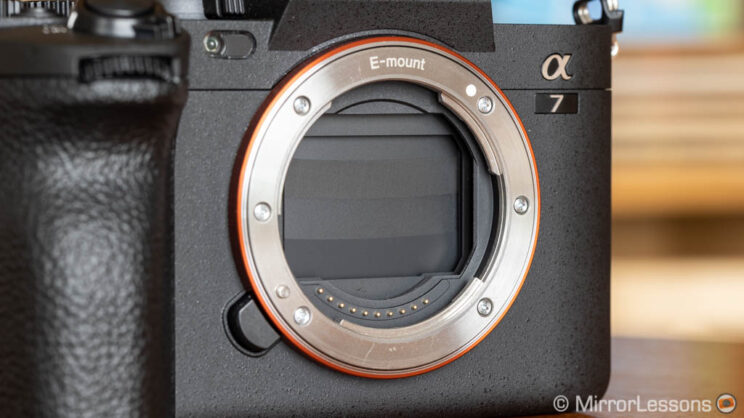
- USB Streaming: the A7 IV can work as a common webcam without the need to install additional software on your computer, unlike the A7R III that needs the Sony Imaging Edge Webcam app.
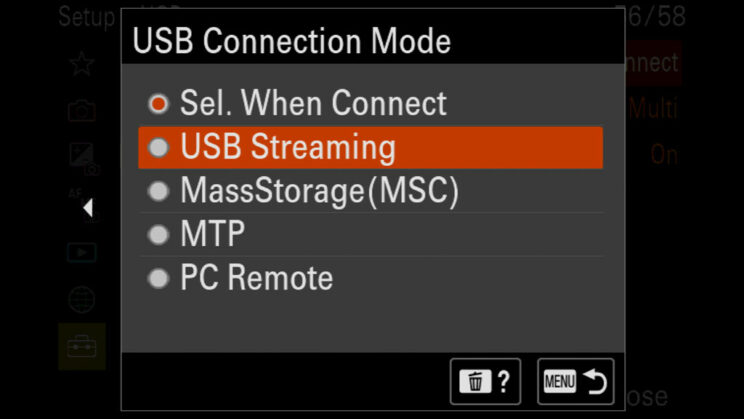
There are also a few things that are gone on the A7 IV but still present on the R3 model, such as NFC wireless connection and the IR receiver for the RMT-DSLR2 remote.
Both cameras have an intervalometer option, as well as bracketing (AE and WB) as well as wifi / bluetooth.
10. Price
The A7 IV can be found at the retail price of $2500, £2400 or €2800.
The A7R IIIA can be found for $2800, £2400 or 2800€ but, being an older model, it may be found discounted temporarily with various offers (instant rebates, cashbacks etc).
The original A7R III (without the A) is now discontinued, but you can find it second-hand for around $1900, £1500 or €1900.
Note: prices are for the body only and as of July 2022.
YouTube Video Review
This article is available in video format on our YouTube channel.
Conclusion
The A7 IV comes four years after the A7R III, and packs a lot of improvements. It has better autofocus, more advanced video settings, an updated body design, more customisation, and a decent number of extra features. It offers a more complete package overall, which can be especially interesting for those who need to work with photos and video.
With that said, the A7R III remains a competitive proposition. Its main strenght is the 42MP sensor, first unveiled in 2015 with the A7R II (the R3 model has a slightly updated version), and it remains one of the best full frame sensor on the market today.
If image quality is your main priority and you want to take advantage of those extra pixels, the A7R III is an excellent choice, especially if you can find it at a discounted price.
Check price of the Sony A7 IV on
Amazon | Amazon UK | B&H Photo | eBay
Check the price of the Sony A7R III on:
Amazon | Amazon UK | B&H Photo | eBay
Second-hand Sony gear on
MPB US | MPB UK
More Sony A7 IV and A7R III comparisons:
A7 III vs A7 IV – A7 IV vs A7R IV
A7 III vs A7R III – A7R III vs A7R IV


